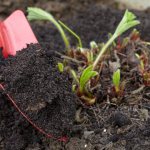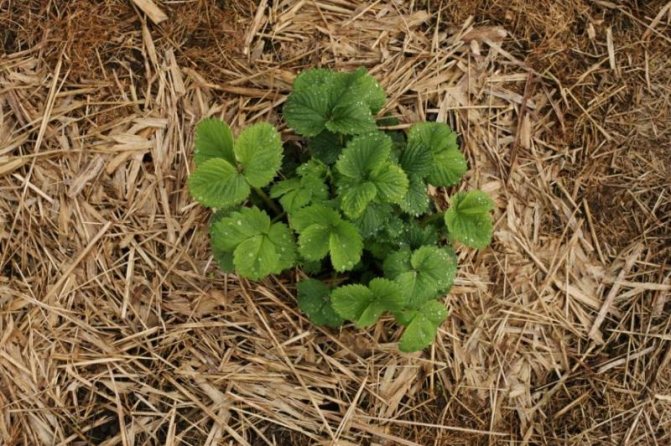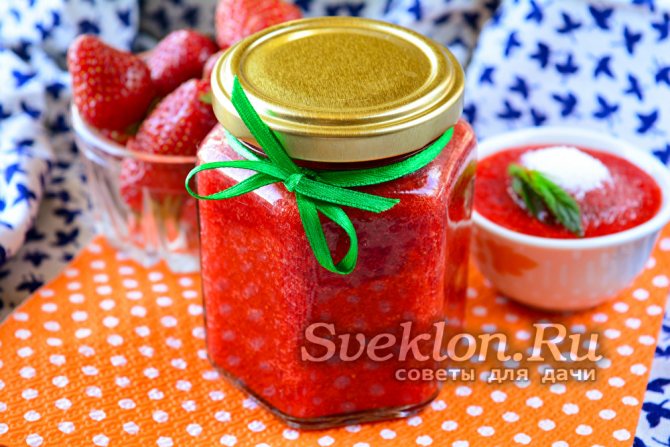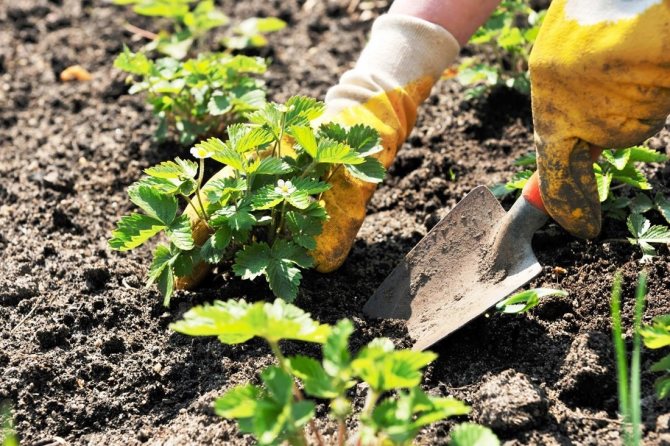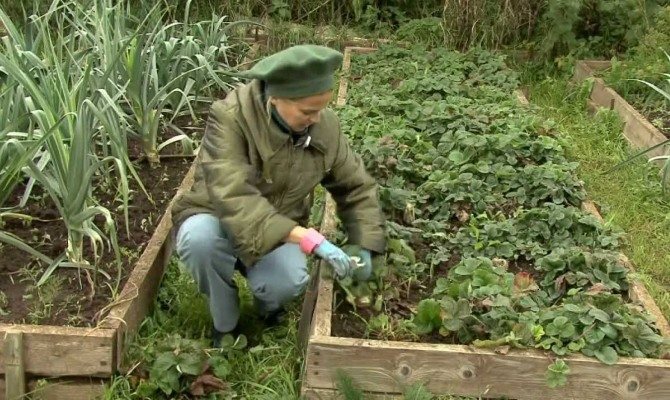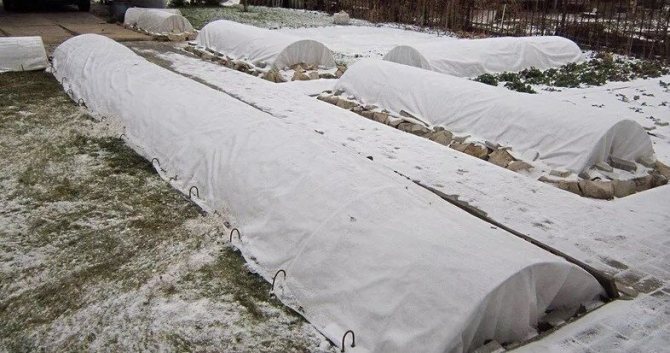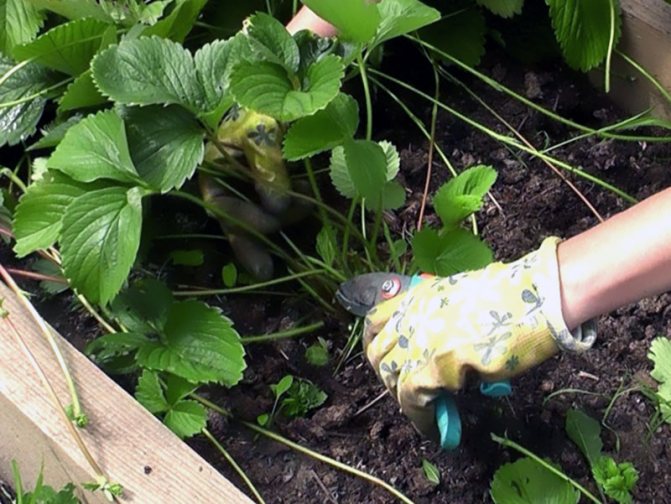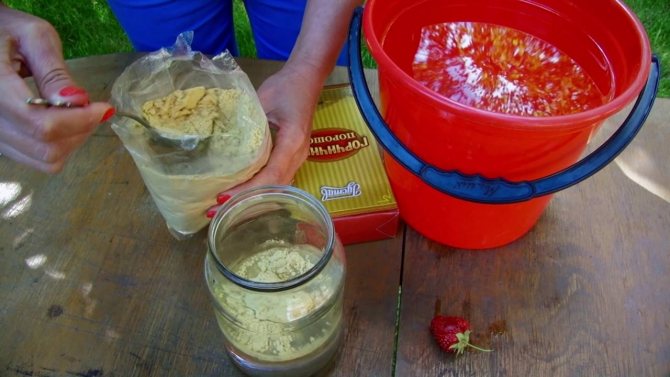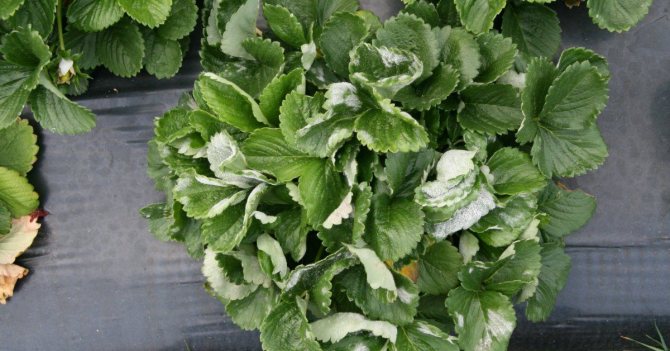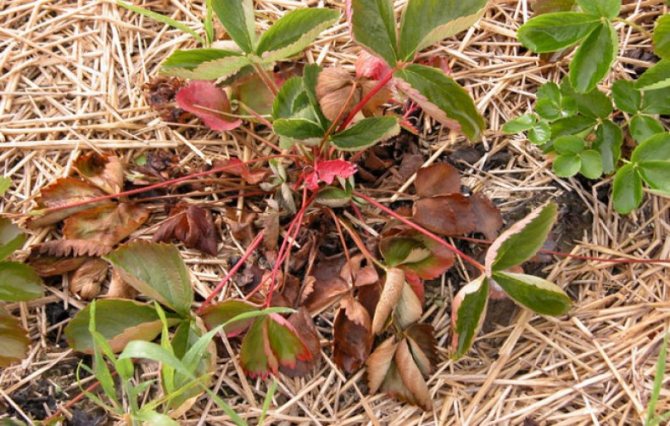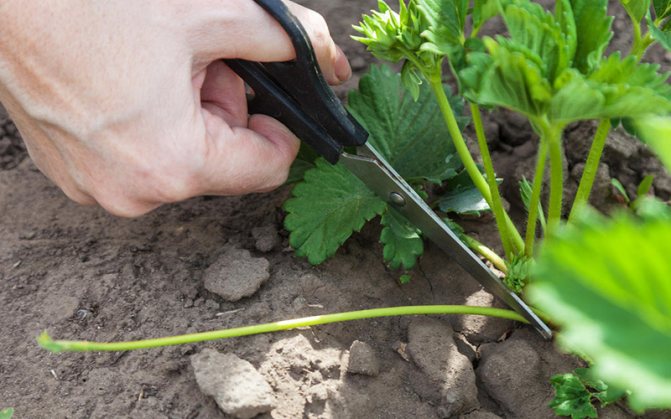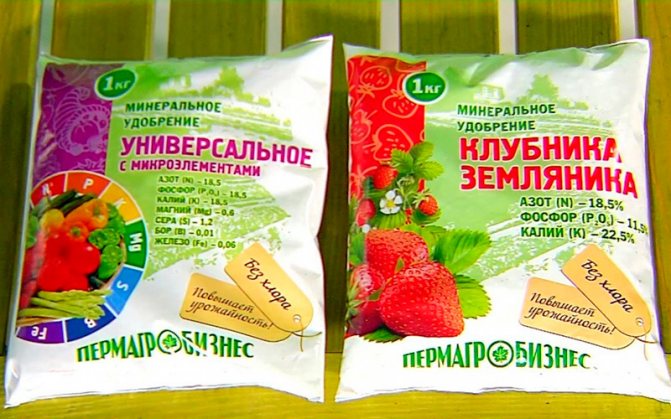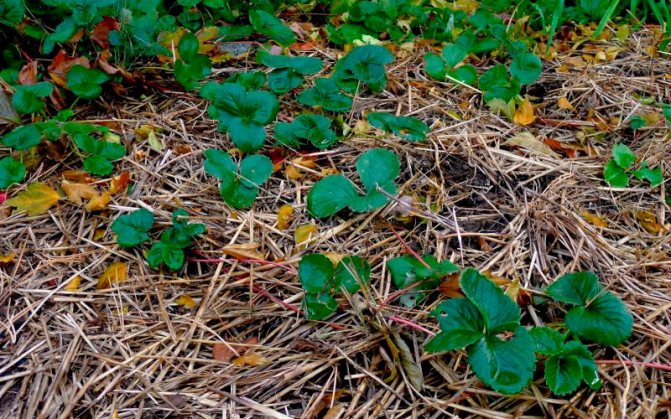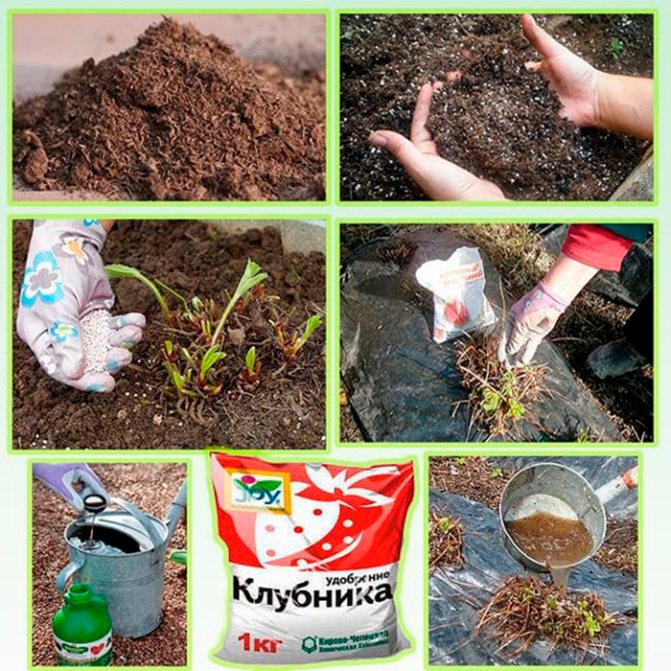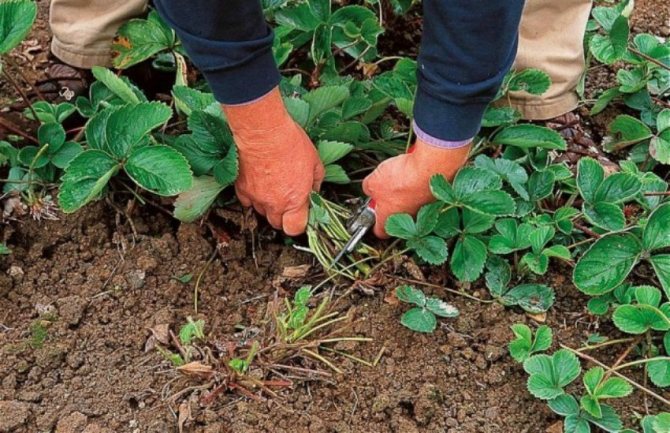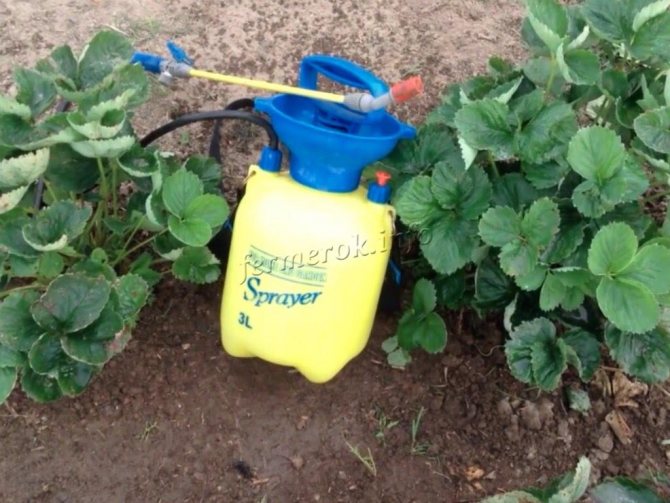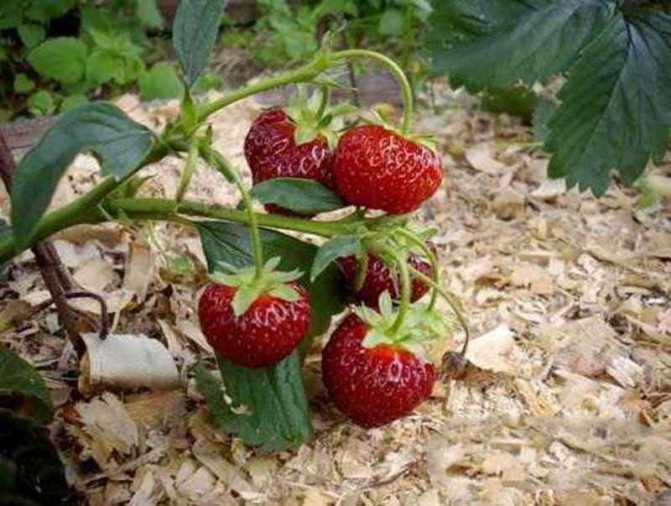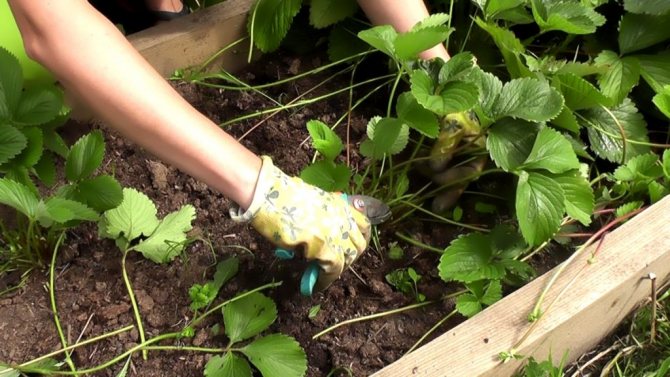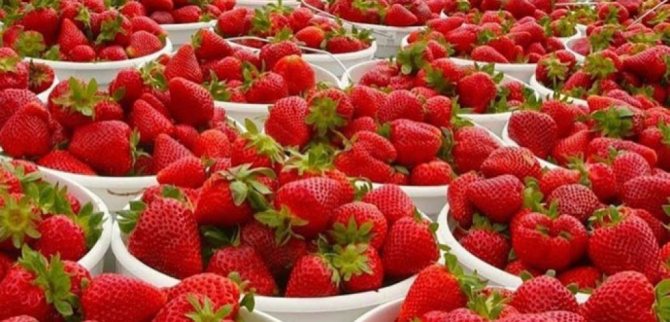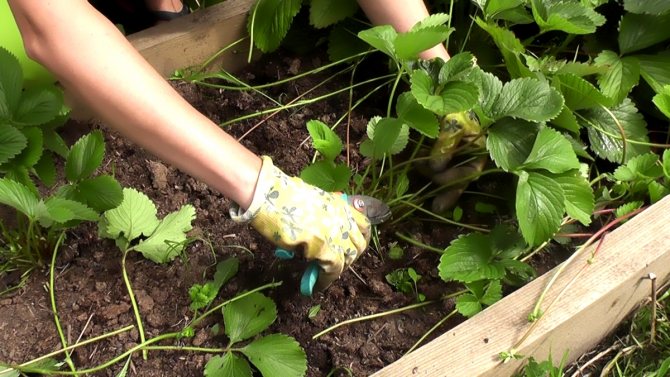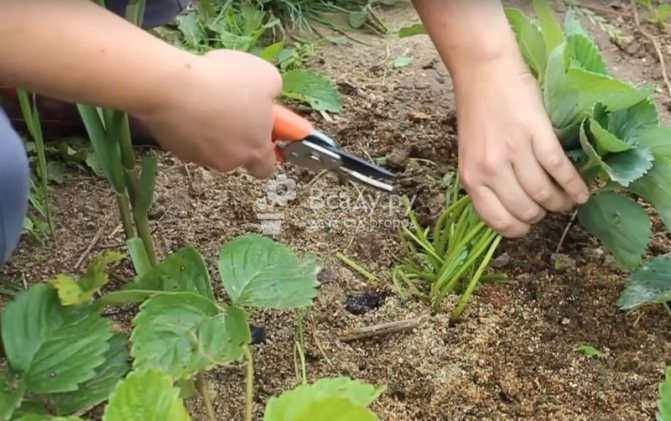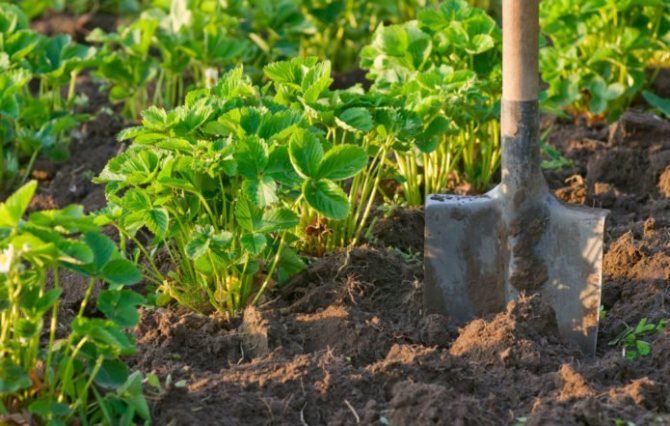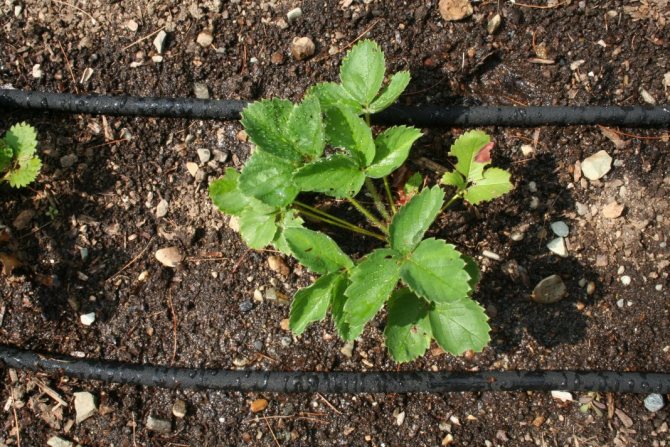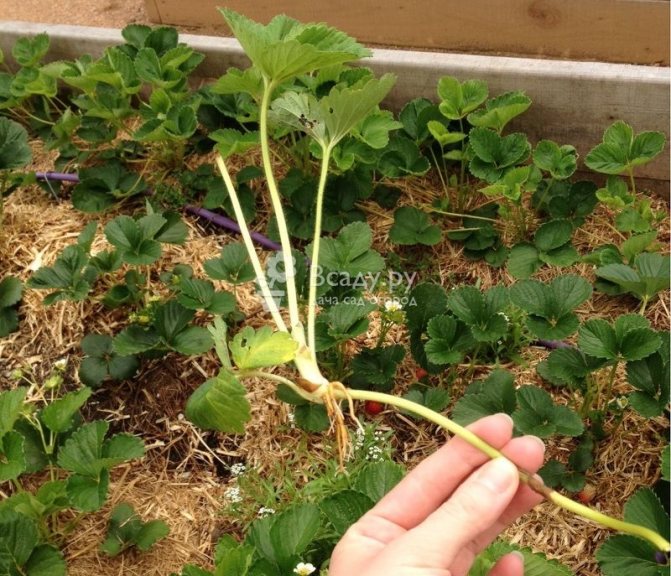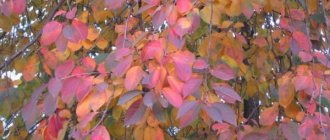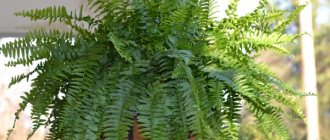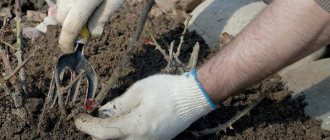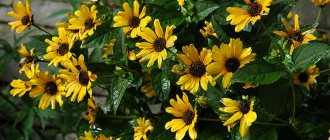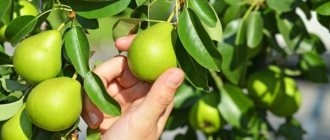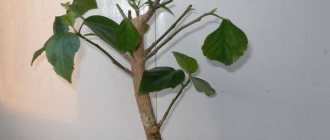The first thing to do with the strawberries after harvest is to weed the garden bed if it is not covered with plastic. Most experienced gardeners know that it is not recommended to weed strawberries during fruiting. Therefore, by the time the crop is harvested, the beds are usually overgrown with weeds. Organic mulch should be removed from the beds after or before weeding. Next, you need to loosen the soil.
It is quite natural that the strawberries are greatly weakened after picking the berries. Therefore, the main task of the gardener during this period is to try to restore the strength of the plants as fully as possible.
What is karbofos
Karbofos is an acaricidal and insecticidal preparation belonging to the class of organophosphorus compounds.
The spectrum of its action is wide: the drug is used in agriculture, they process greenhouses with karbofos, it helps in the fight against ticks and other pests. Also used in medicine and sanitary and household pest control.
Important!
Malophos has increased volatility, which increases at high temperatures, which should be taken into account when processing a room.
Chemical and biological agents against diseases
Strawberries can be treated in the fall against pests and diseases with various fungicides created in a production environment.
| Means | Dilution rate (g / l) | What is the processing |
| Topaz | 2/10 | Rot, rust, |
| Copper oxychloride | 20/10 | Spotting, rot. |
| Bordeaux liquid | 100/3 | Fungal and bacterial diseases. |
| Fundazol | 5/5 | Powdery mildew. |
| Alirin-B | 2/10 | A large number of pathogenic fungi. |
| Fitosporin | 30/10 | Bacteriosis, powdery mildew, brown rust, fusarium, late blight. |
| Switch | 100/5 | Late blight. |
| Zircon | 2010 | All types of spotting. |
| Teldor | 8/10 | Scab, brown spot, powdery mildew. |
| Trichodermin | 50/10 | Gray, white decay, cytosporosis, late blight, verticillosis. |
| Nitrafen | 200/10 | Scab, spotting. |
| Copper sulfate | 30/10 | Fungal pathologies. |
Composition and active ingredient of the insecticide
The active ingredient of the drug is malathion
- a colorless liquid of oily texture, which has an unpleasant odor characteristic of thiols. It may contain diethyldithiophosphoric acid as an impurity.
Malathion is slowly hydrolyzed by water, is thermally stable, and under the influence of oxidants it turns into a much more physiologically active maloxone. In organisms of pests, it shows its high toxicity.
Did you know?
The first developments of karbofos began in the 19th century, and in the 30s of the 20th century, academician Arbuzov was engaged in obtaining a pesticide that was non-toxic to humans. At first, the development was unsuccessful, extremely poisonous; later, selectively toxic compounds and an antidote for the class under study were discovered.
When is the treatment carried out?

Strawberry processing in the fall is carried out after the last crop has been harvested. If a simple strawberry is growing, then you can spend it at the end of September. But if the strawberries are remontant, then the processing is postponed as much as October-November, when the last berries are collected.
Before processing, it is necessary to remove the bed.All old, dry leaves are removed from the bushes, in which pests, diseases can hide, the aisles are thoroughly cleaned of weeds, fallen leaves - the focus of the spread of fungal spores. You can also dig up the aisles so that during processing the drug can easily penetrate the soil, and not only hit the leaves of the plants.
Instructions for the use of karbofos: how to use the drug in the garden
Karbofos is widely used in horticulture. The drug successfully works on all types of fruit and conifers, melons, ornamental plants, flowers.
Karbofos is irreplaceable for the garden. It copes with various gnawing and sucking species of insects, they can process strawberries in the spring from a tick, with its help fight the scabbard on a pear, apple tree, quince, aphids on blackberries and raspberries, kidney moths on currants, sawfly on cherries and cherries, weevils , moths, mealybug. The first spraying with karbofos, according to the instructions for using the drug in the garden, should be carried out when the buds open on the plant, the second - on the eve of flowering, when the flower brush is extended. Do not treat one tree or bush with karbofos more than 2 times per season, as stated in the instructions for use for trees.
For fruit trees, the norm of karbofos per 10 liters of water is 90 g, for berry bushes - 75 g. You can harvest no earlier than a month after the final spraying from ticks in the country. After collection, the leaves are mowed and the garden is spilled with a warm solution of malofos, then covered with a film.
Important!
Karbofos breaks down very quickly when alkali is added.
What to do before processing
Before spraying the bushes, they must be carefully prepared.
- Remove all dried foliage.
- Collect plant residues and burn.
- Dig and loosen the soil.
- Remove all weeds.
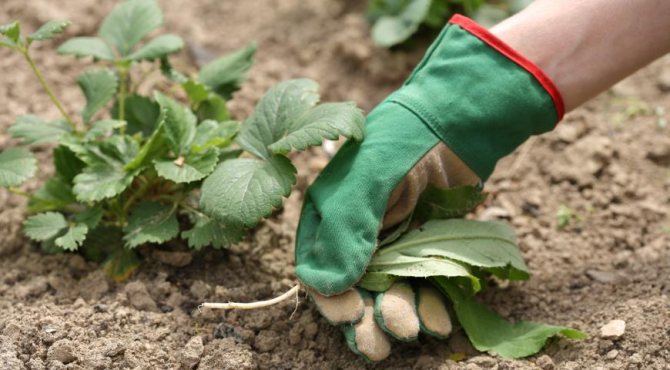

If it is necessary to transplant strawberries, since the plantings are renewed every 5 years, then do this, and destroy the plants in the old beds.
Safety measures when using karbofos
You can confuse karbofoska with the fertilizer "Ammophos" when used in the garden, which is often the fault of careless manufacturers.
To avoid this, before starting work, you should carefully read the instructions for using the drug karbofos. Cover nearby crops with plastic wrap before spraying.
You can not use the insecticide during the flowering of fruit trees and ornamental plants, so as not to kill the bees. Plants need to be sprayed in calm, clear weather at temperatures up to 20 degrees.
When asked whether karbofos is harmful to humans and whether it is worth using additional protective equipment, one can answer that the drug is moderately toxic, with prolonged inhalation it can cause burns to the respiratory system, you need to work in a respirator, glasses, gloves. You should use an air ozonizer to protect against malophos, keeping in mind what malophos smells like.
Despite the abundance of modern means of fighting insects, gardeners still prefer the time-tested "Karbofos". The drug is used to combat numerous types of pests of horticultural crops: vegetables, melons, fruit and berry bushes and trees, berries, grapes, flowers, ornamental plants.
"Karbofos" is produced by several manufacturers in different forms (liquid, granules, powder, tablets, emulsions), with various additives and in different con, "Antiklesh", "Atkellik", "Inta-TsM", "Iskra-M", " Fenaxin-plus "," Fufanon-nova "). Fragrances with a pungent unpleasant odor are added to all preparations to increase the safety of animals and people. After application, the smell of "Karbofos" quickly disappears.
"Karbofos" belongs to the drugs of the third group (medium degree) of danger, not very phytotoxic.The popularity of karbofos is due to its high efficiency.
How to feed the berry after planting and transplanting
If you planted strawberries in the autumn, then it must be fertilized without fail so that the soil contains the necessary trace elements. It is important to note that top dressing can increase yields by at least 30%.
Experienced gardeners advise using organic fertilizers. Let's consider the most popular types of feeding.
Chicken droppings


To make an effective soil replenishment agent, you need to dilute 1 kg of manure in 10 liters of water. We insist the solution for 2 days, then filter and pour it under the root.
Mullein
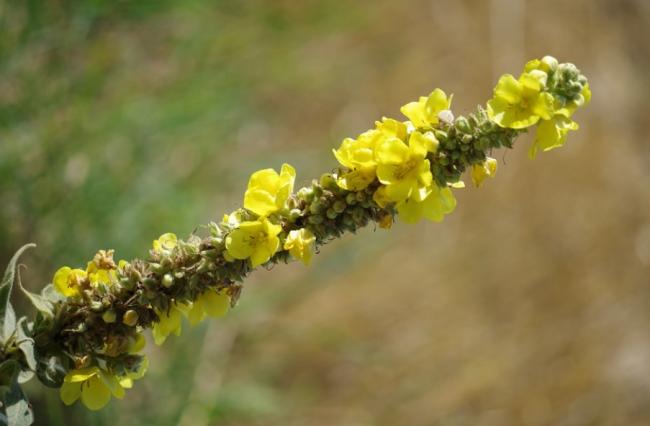

Stir the dry material in water, in a ratio of 1:10. After a day, add wood ash and water the beds. We do not use this mixture as a foliar dressing.
Ash
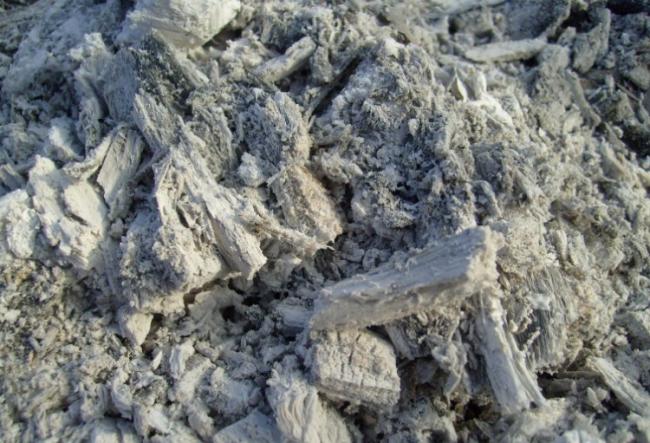

It is a versatile fertilizer that feeds the soil with calcium. Sprinkle each square meter with 150 g of wood ash. It can also be used in liquid form, for this we dilute a glass of material in a bucket of water. Pour 500 ml under each bush.
After feeding, the berry must be watered.
Also watch a video with instructions for caring for strawberries in the autumn:
Of course, each gardener has his own secrets of caring for strawberries, taking into account his own observations. You also need to take into account the climatic conditions of certain regions and the current year.
Bordeaux liquid is one of the most famous products that gardeners and gardeners use to treat a variety of crops. This mixture belongs to highly effective fungicides, therefore it has found application among gardeners when growing strawberries in order to treat and prevent fungal diseases. At the same time, in order to achieve the best result, it is important to follow the rules for using the Bordeaux mixture, to process the bushes strictly within the recommended time frame, and also to know the useful and harmful properties of this product. Read more about all this later in the article.
Drug action
"Karbofos" - contact action insecticide and acaricide. Works only with direct contact with an insect. The "hidden" insect does not die and is capable of producing offspring.
The drug has a protective effect only on those parts of the plant with which it comes into contact. The advantages of contact preparations include a quick, almost instant disposal of plants from pests.
"Karbofos" is a short-acting drug. It quickly collapses under the influence of the sun, air, water. Complete decay when processing plants in the open field occurs within 7-10 days after application, and in greenhouses after a week. Malophos is removed from plants within a week.
"Karbofos" belongs to the group of continuous action products. Destroys several types of insects and larvae at the same time. Regular use can form resistance (addiction).
"Karbofos" is used both in agriculture and in forestry, household, sanitary and medical disinsection, for pest control of food and seed stocks.
In horticulture and horticulture, it is used to combat gnawing, herbivorous and sucking insects, their larvae and caterpillars:
- scabbards
- red and spider mites
- bedbugs
- thrips
- gall midges
- whiteflies
- coppers
- kidney moth
- sawflies
- weevils
- moths
- mealybugs
- leafhoppers
- bean moth
- pea weevil
- flies
Important!
"Karbofos" affects beneficial pollinating insects: bees, wasps, bumblebees. It cannot be used during active flowering and cannot be sprayed within a radius of less than 5 kilometers from the hives.
Preparing for winter
If, after picking berries, you just throw a strawberry garden until next spring, then pests can start under fallen or diseased leaves, and weak bushes in early spring will pick up some kind of disease, which will then spread throughout the garden. Therefore, every autumn it is imperative to prepare the plants for winter.
- Cutting off leaves - Any sick or old leaves must be cut off and thrown away. In parallel, it is advisable to cut off unnecessary antennae. The less excess is, the easier it will be for the strawberries to endure the winter. But if seedlings are required for the next season, then the antennae are not touched until spring.
- Pruning bushes - The opinion of gardeners is divided about this procedure. Some advocate pruning the bushes so that the strawberries have a rest, while others believe that they do not need to be touched. Therefore, in this case, you can conduct an experiment by cutting off one half, and leaving the other as it is. In the summer you can see which half of the crop has increased.
- Weeding - It is imperative to weed all the land from weeds so that next year their number will be reduced significantly. You need to pull out together with the roots, and then carefully loosen the ground.
- Repotting - The bushes need to be renewed every three years. For this, the first rosette is transplanted with full leaves and roots. This procedure can be done not only in the fall, but also in the spring.
- Top dressing - Of course, the most important top dressing is spring dressing. But in the fall, you also need to feed, but this should be done carefully, since there are substances that will prevent strawberries from hibernating normally. For example, nitrogen, which stimulates the growth of greenery on plants. It is enough to give a weak solution of chicken manure, dissolving one part in ten liters of water. It can be replaced with manure or humus. As a last resort, sprinkle the entire soil with wood ash, which will not only fertilize the soil, but also protect it from insect pests.
- Shelter - In regions where winters are very changeable or frosty, the entire bed must be covered in any way: dry raspberry sprigs, tops, spandbond, agrotex, spruce or pine needles. The main thing is that the material allows air to pass through. It is undesirable to cover with plastic wrap, otherwise pathogenic bacteria may develop under it. For the same reason, experienced gardeners do not recommend using sawdust as mulching. Mulching with straw is fine, but you should take into account that mice can start in it, so you should install an ultrasonic rodent repeller or poison for them nearby.
The more thoroughly the processing is carried out in the fall, the easier it will be for the plant to bear fruit in the next season, and the gardener will be able to take a break from the fight against pests and diseases.
Application of "Karbofos"
The most common way of treating plants with Karbofos in a garden is by spraying. The procedure is carried out in sunny calm weather without wind and rain at a temperature not lower than + 15 ° C, in the morning or evening hours. The spray solution must be freshly prepared.
Spray until completely wetted with a solution of leaves and stems of the plant. The dosage is determined using the instructions for use in the garden, taking into account the area of treatment, the degree of damage, the type of plants and insect pests. It is advisable to process the plants no more than two times per season.
Raspberries and blackberries
Raspberries and blackberries are processed for the first time in early spring before flowering. Secondary after picking berries. "Karbofos" saves shrubs from aphids, kidney moths, ticks, weevils, raspberry-strawberry beetle. The consumption rate is 75 grams per bucket of water. 10 bushes require up to 2 liters of working solution.
Currant
The insecticide relieves currants from leaf beetles, scale insects, kidney moths, gallium, sawfly, aphids, ticks. Processing is carried out three times per season: ✔ During the swelling and opening of the kidneys. ✔ During the formation of the flower brush. ✔ The last time is 30 days before the berries ripen.
The working solution of "Karbofos" is prepared from 75 grams of funds per bucket of water, at the rate of one and a half liters per one currant bush. In case of severe damage to the bushes by spider and red mites, in the fall, in addition, currant bushes and the soil under them are abundantly moistened with a 2% solution of karbofos.
Gooseberry
Gooseberry karbofos protects against moths, moths, moths, sawflies, spider mites and red mites. A liter of working solution from 60 grams of karbofos and 8 liters of water is enough for one bush. Last treatment one month before harvest.
Floral and ornamental shrubs
To protect shrubs (roses, jasmine, barberry, spirea, cotoneaster, etc.) from spider mites, rose sawflies, aphids will help a solution of 60 grams of the product in 8 liters of water. For 10 m² you need 2 liters. Spraying is carried out before and after flowering.
Sea buckthorn
Sea buckthorn is sprayed in the spring during budding. To prepare the solution, a larger volume of water is required than for other berry bushes - 3 liters per standard package of the drug in 60 grams. When processing 10 m², about two liters are consumed.
In the fall in the garden, in order to obtain a good harvest in the future, sea buckthorn cuttings are dipped for a few minutes in a freshly prepared solution, placed in a plastic bag, tied and left for a day.
Fruit trees
These trees are often damaged by weevils, ticks, leaf rollers, sawflies, moths, scale insects, cherry fly. The first time the trees are sprayed during the swelling of the buds and the beginning of budding, the second - a month before the start of the collection of berries.
Treatment of trees with karbofos
Important!
For citrus fruits, 5 liters of solution is enough for one tree. The last treatment is carried out 50 days before collection.
Strawberry wild-strawberry)
"Karbofos" is effective against the main enemies of strawberries - strawberry weevils and ticks. The berry is cultivated until the spring mass emergence of weevils to the surface at a soil temperature of + 8 ° C during bud setting.
From ticks, each strawberry bush is watered in August-September after the harvest has been harvested and the plantation has been cleared of dry leaves. After processing, the berry is covered for 6-12 hours. The concentration of the working solution is 60 grams of "Karbofos" per 8 liters.
Harvested, what's next?
When the bushes have borne fruit, they need restoration. But the plants continue to deplete at the expense of the whiskers and old, somewhere withered and beaten by rain or hail of leaves. Therefore, on the plantation of the second or third year, they must be removed with pruning shears. If you do this right after picking the berries, then the young bushes will have enough time to:
- have time to build up the green mass;
- accumulate nutrients;
- go into winter with a reserve of energy for the future harvest.
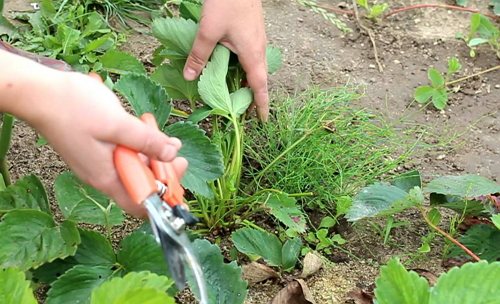

Removing whiskers and old strawberry leaves
Unnecessary, but rooted sockets should also be removed. If you liked some, especially fruitful bush, then its sockets can be transplanted to a new ridge.
On five-year-old, especially infected plantations, continuous mowing is allowed. This does not mean that you need to take a scythe and go to the berry field. It is just that all ground parts of plants are removed with a sharp pruner, leaving petioles 5 cm in size and without affecting the dense and green "heart" at the base of the roots.
If the plantation was infected with fungal infections, then experienced gardeners, after mowing, "walk" over the plants and on the ground around them, also with a blowtorch. This should be done quickly, without lingering on each bush for more than 1 second.
It is better for beginners not to resort to such extreme methods, but to lay new beds on time. The new whiskers that grow in the future continue to be regularly removed, and the new growing leaves are no longer touched.
Security measures
When using in the garden and storing "Karbofos", you should follow the mandatory rules:
- Keep out of reach of children and pets at temperatures from -20 ° C to +35 ° C for no more than three years. Avoid heating. Keep away from fire.
- When spraying shrubs and trees, the adjacent beds are covered with any covering material.
- During the procedure, protective equipment is put on: rubber gloves, a respirator, special clothing, glasses. When preparing a solution, processing, do not drink, eat, or smoke.
- After work, the clothes must be changed, the exposed areas of the body must be washed under running water with plenty of soap, and the mouth must be rinsed.
- Do not mix with other drugs.
- To avoid the ingress of insecticide into water bodies, do not carry out protective work in the garden during or immediately before rain.
How to treat gray rot strawberries without cutting the leaves
In the fall, it is recommended to remove all damaged and dry leaves, but if you did not have time to do this, you can still treat the strawberries with special preparations.


In September and October, the following remedies are suitable:
- Nitrofen. It is used in late autumn. Stir 150 g of pasta in 10 liters of heated water. Spray the bushes with the resulting mixture and pour into the soil. The drug helps to fight gray mold, as well as many pests.
- Copper oxychloride. 1 tbsp of the product is stirred in a bucket of warm water. We spray the culture not only in the fall, but also in the spring.
- Folk remedy. In 10 liters of warm water we dilute 500 ml of liquid soap, 3 tablespoons of vegetable oil, 2 tablespoons of wood ash and 2 tablespoons of table vinegar. We process soil and bushes.
All these solutions help fight diseases that summer berries are prone to.
Storage of the drug
The drug is stored in a dry place. Do not store the drug with food or medicine. Animals and children should not have access to Karbofos. When using the drug in personal subsidiary plots, mixing it with other drugs is prohibited.
Despite the abundance of modern insect control products, gardeners still prefer the time-tested karbofos. The drug is used to combat numerous types of pests of horticultural crops: vegetables, melons, fruit and berry bushes and trees, berries, grapes, flowers, ornamental plants.
Processing time
Before starting the autumn processing, you must first take into account the variety of strawberries, since they bear fruit in different ways. Someone earlier, some later, and some even twice a season. If fruiting lasts until the end of August, then processing is carried out somewhere in October. If the harvest is over in July, then it is processed at the end of August, without waiting for the air temperature to drop to zero. Experienced gardeners recommend mulching the berry crop for the winter so that it does not weaken from severe frosts or from lack of snow.
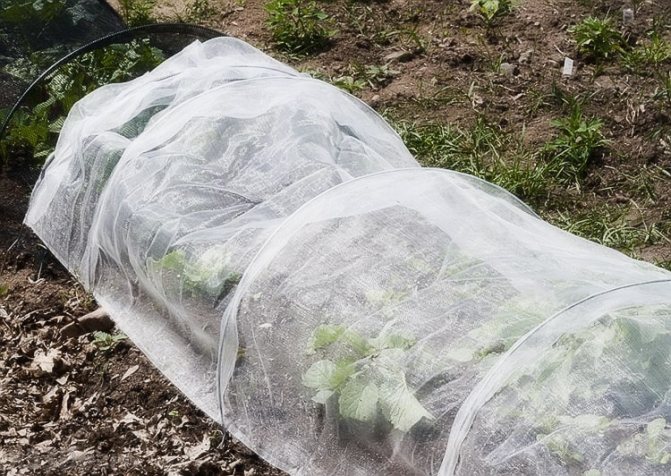

Characteristics of the drug
Karbofos is used to combat numerous pests.
Refers to organophosphorus compounds (FOS). It is an insecticidal-acaricidal drug, half of malathion. In its pure form, malathion is a colorless liquid with a characteristic pungent odor of an oily consistency.
Karbofos dissolves easily in water, forming a stable emulsion. At low temperatures, it thickens, while maintaining toxicity.
Karbofos is produced by several manufacturers in different forms.
(liquid, granules, powder, tablets, emulsions), with various additives and in different concentrations (Alatar, Antiklesch, Atkellik, Inta-TsM, Iskra-M, Karbofos, Fenaxin-plus, Fufanon-nova). Fragrances with a pungent unpleasant odor are added to all preparations to increase the safety of animals and people. After application, the smell disappears quickly.
Refers to drugs of the third group (medium degree) of danger, not very phytotoxic. The popularity of karbofos is due to its high efficiency.
Important.
Experts from the American Cyanamid Company are considered the creators of the first malathion-based insecticidal preparations. Appearing on the market in 1950 under the name TM4049, the drug was later renamed malaton and later malathion.
Research in this area was also carried out in the Soviet Union. In 1952, regardless of American developments, chemical scientists K.D. Shevtsova-Shilovskaya and N.N. Melnikov received domestic malathion. The drug, which began to be produced for agriculture and sanitary disinfection, was called karbofos.
What makes strawberries sick
Before you start processing strawberries in the fall for diseases and pests, it is worth getting to know those that can threaten garden strawberries. Among them are dangerous - rust, spotting, late blight.
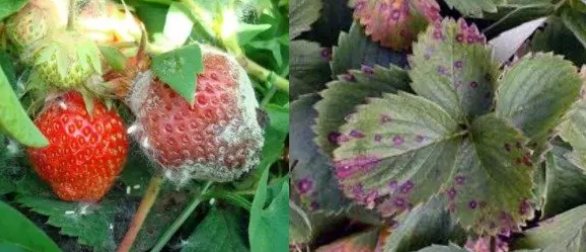

Let's get to know each other better.
- Powdery mildew. Leaves become whitish, moldy and odorless.
- Brown spot, or cladosporosis. Crimson circles appear on the leaf plate. Then the spores of the fungal disease become visible.
- Gray rot. A silvery bloom forms on the berries, and they rot.
- White spot, or ramulariasis. It looks like brown, but white dots appear inside the brown spots.
- Brown spot. The most dangerous type of disease from spotting. Strawberries can die quickly.
- Black root rot. The underside of the leaf turns dark and then fades. The roots are very cracked.
- Mosaic virus. The leaf plates become curly, then turn yellow and die.
- Red root rot. Appears in damp and poorly heated ground.
- Late blight. It can manifest itself with severe waterlogging. It manifests itself as brown spots on the leaves and berries, which lose their aroma and gradually dry out.
- Verticillary wilting. The fungus appears in the soil and passes into the plant, occupying the vessels that conduct liquid to the entire strawberry.
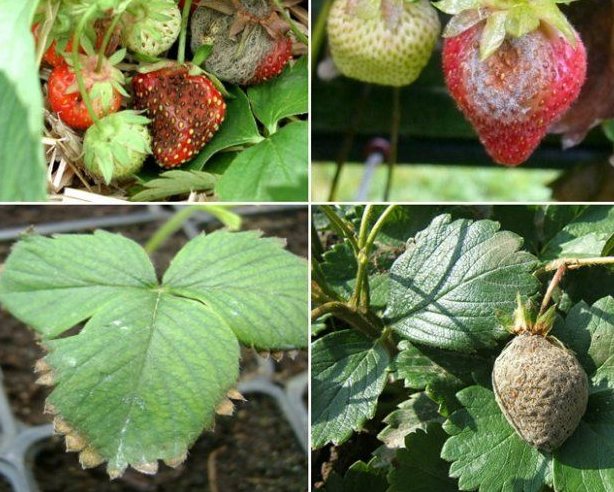

In some diseases, strawberries are cut out completely if infested too much.
Advice!
You should not bring strawberry bushes to a state where it will be easier to destroy them than to save them. Constantly inspect the plantings and take preventive measures.


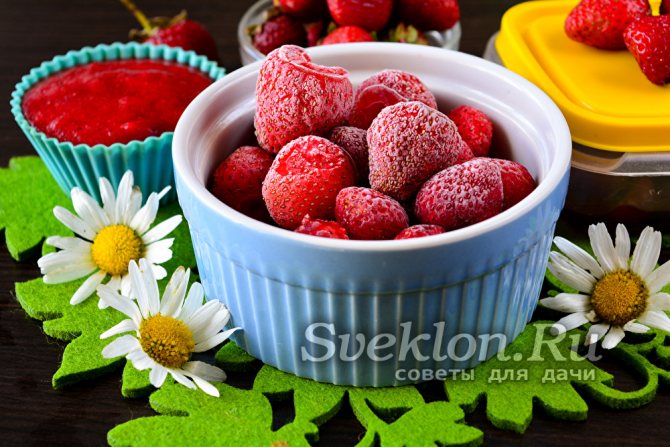

The action of the drug Karbofos


Karbofos instantly removes pests from plants.
Drug karbofos:
- Contact action insecticide and acaricide. Works only with direct contact with an insect. The "hidden" insect does not die and is capable of producing offspring.
- It has a protective effect only on those parts of the plant with which it comes into contact. The advantages of contact preparations include a quick, almost instant disposal of plants from pests.
- The drug is short-acting. It quickly collapses under the influence of the sun, air, water. Complete decomposition when processing plants in the open field occurs within 7-10 days after application, and in greenhouses after a week. Malophos is removed from plants within a week.
- Refers to a group of continuous action means. Destroys several types of insects and larvae at the same time. Regular use can form resistance (addiction).
Important. The International Health Organization purchases and donates thousands of tons of Anophles mosquito control drug, which is a vector for malaria, annually.
Processing strawberries in the fall from pests and diseases
Summer berries are susceptible to viral and fungal diseases. Also, it is constantly destroyed by various pests. Therefore, it requires regular care. In the autumn period, it is imperative to carry out processing.
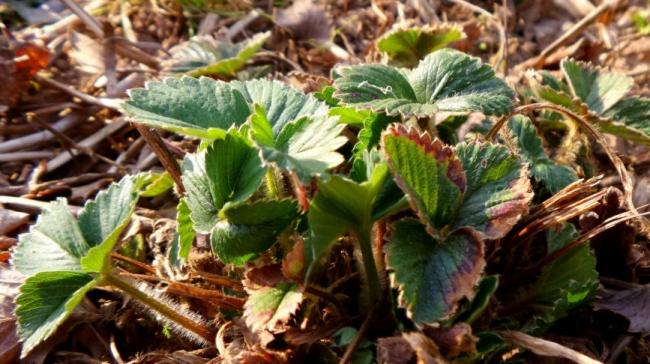

To prevent the risk of pest damage in the winter, it is recommended to use the following means:
- Metaldehyde helps against slugs. 5 g of the drug will be needed for 1 sq. m.
- Kleschevit and Karbofos allows you to get rid of the transparent mite. For the same purposes, an ash solution is used.
- If Victoria is damaged by weevils, then use Aktaroy, Intavir or Aktellik.
- Wood lice can be removed manually. We check all the leaves and destroy the pests.
Do not forget to remove dry leaves and weed beds.
The folk method is a universal remedy against diseases and harmful insects. For this, we will prepare a solution. Mix 3 tablespoons of sunflower oil, 2 cups of liquid soap, 2 tablespoons of vinegar and 2 tablespoons of ash. Stir all the ingredients in a bucket of clean water.
With the resulting mixture, we make foliar dressing and pour it under the bushes.
Repaired berries should be sprayed before winter, and ordinary varieties in September-October, depending on weather conditions.
To protect the plant from low temperatures, cover it with coniferous branches or special material.
Application area
Karbofos is widely used in many areas.
It is used in agriculture and forestry, household, sanitary and medical disinsection, for pest control of food and seed stocks.
In horticulture and horticulture, it is used to combat gnawing, herbivorous and sucking insects, their larvae and caterpillars:
- scabbards;
- aphids;
- red and spider mites;
- bedbugs;
- thrips;
- gall midges;
- whiteflies;
- copperheads;
- kidney moth;
- sawflies;
- weevils;
- moths;
- mealybugs;
- leafhoppers;
- bean moth;
- pea weevil;
- flies.
Important.
Karbofos affects beneficial pollinating insects: bees, wasps, bumblebees. It cannot be used during active flowering and cannot be sprayed within a radius of less than 5 kilometers from the hives.
Chemical and biological pest control
Consider what chemicals can be used to process strawberries.
| Means | Dilution rate (g / l) | From whom the processing is carried out |
| Alatar | 0,5/4 | Weevils, leaf beetles, aphids, ticks, white beetle. |
| karbofos | 30/10 | Strawberry, spider mites. |
| Intavir | Broad spectrum of action | |
| Verticillin | 25/1 | Whitefly. |
| Fufanon-Nova | 7/6 | Thrips, scale insects, sawers. |
| Agrovertin | 1/10 | Tick, thrips, aphids. |
| Phosbecid | 5/5 | whiteflies, weevils, ticks, aphids, scale insects, thrips, sawflies |
| Fitoverm | 4/1 | Most pests. |
| Actellic | 2/2 | Thrips, false shield, tick, aphid, sawfly, moth. |
| Manganese | 2/10 | Aphids, mites. |
| Apollo | 2/5 | Red ticks. |
| Aktofit | 2/1 | Nematoda, spider mite. |
| Aktara | 4/1 | Treatment against 200 insects. |
| Metaldehyde | The granules are scattered. | Against snails and slugs. |
There are other means, but they are used strictly according to the instructions.
Processing rules
The most common way to treat plants with karbofos in a garden is by spraying. The procedure is carried out in sunny calm weather without wind and rain at a temperature not lower than + 15 ° C, in the morning or evening hours. The spray solution must be freshly prepared.
Spray until completely wetted with a solution of leaves and stems of the plant.
The dosage is determined using the instructions for use in the garden, taking into account the area of treatment, the degree of damage, the type of plants and insect pests.
It is advisable to process the plants no more than two times per season.
Raspberries and blackberries
Raspberries and blackberries are processed for the first time in early spring before flowering. Secondary after picking berries.
Karbofos saves shrubs from aphids, kidney moths, ticks, weevils, raspberry-strawberry beetle.
The consumption rate is 75 grams per bucket of water. 10 bushes require up to 2 liters of working solution.
Currant
The insecticide relieves currants from leaf beetles, scale insects, kidney moths, gallium, sawfly, aphids, ticks.
Processing is carried out three times per season:
- during swelling and opening of the kidneys;
- during the formation of the flower brush;
- the last time 30 days before the berries ripen.
The working solution is prepared from 75 grams of funds per bucket of water, at the rate of one and a half liters per one currant bush.
In case of severe damage to the bushes by spider and red mites, in the fall, in addition, currant bushes and the soil under them are abundantly moistened with a 2% solution of karbofos.
Gooseberry
Spring treatment with gooseberry karbofos.
Gooseberry karbofos protects against moths, moths, moths, sawflies, spider mites and red mites.
A liter of working solution from 60 grams of karbofos and 8 liters of water is enough for one bush. Last treatment one month before harvest.
Floral and ornamental shrubs
To protect shrubs (roses, jasmine, barberry, spirea, cotoneaster, etc.) from spider mites, rose sawflies, aphids will help a solution of 60 grams of the product in 8 liters of water.
For 10 m² you need 2 liters. Spraying is carried out before and after flowering.
Sea buckthorn
Sea buckthorn is sprayed in the spring during budding. To prepare the solution, a larger volume of water is required than for other berry bushes - 3 liters per standard package of the drug in 60 grams. When processing 10 m², about two liters are consumed.
In the fall in the garden, in order to obtain a good harvest in the future, sea buckthorn cuttings are dipped for a few minutes in a freshly prepared solution, placed in a plastic bag, tied and left for a day.
Fruit trees
These trees are often damaged by weevils, ticks, leaf rollers, sawflies, moths, scale insects, cherry fly. The first time the trees are sprayed during the swelling of the buds and the beginning of budding, the second - a month before the start of the collection of berries.
The first time it is necessary to treat with Karbofos, during the swelling of the kidneys.
Important.
For citrus fruits, 5 liters of solution is enough for one tree. The last treatment is carried out 50 days before collection.
Strawberry wild-strawberry)
Karbofos is effective against the main enemies of strawberries - strawberry weevils and ticks. The berry is cultivated until the spring mass emergence of weevils to the surface at a soil temperature of + 8 ° C during bud setting.
From ticks, each strawberry bush is watered in August-September after the harvest has been harvested and the plantation has been cleared of dry leaves. After processing, the berry is covered for 6-12 hours.
The concentration of the working solution is 60 grams of karbofos per 8 liters.
Processing strawberries after fruiting
When everything superfluous is removed from the ridges - leaves, mustaches, weeds, the earth must be disinfected with copper sulfate or diluted potassium permanganate. The color of the solution should be crimson. This should be done, trying not to get on the plants, but for fidelity - after processing, it is better to lightly pour clean water from a watering can with a spray.


After a day or two, strawberries need to be fed with one of the mineral complexes:
- Nitrofoskoy;
- Ammophos;
- Azofoskoy.
These fertilizers are suitable if time is not lost - no later than the end of July. If it happens in August, then


nitrogen fertilizers are excluded and then they are mixed for feeding:
- superphosphate;
- potassium sulfate;
- ash.
Fertilizers can be applied both dry during the next loosening of the soil, and in dissolved form.
Until the end of summer, you need to continue to remove the new whiskers, leaving healthy leaves; weed, loosen and water. You can cover the soil between the bushes and the aisles with a layer of mulch. Then there will be no need for loosening, watering will be reduced, and the growth of weeds will weaken.
Safety measures during use and storage
When using in the garden and storing karbofos, the following mandatory rules should be observed:
- Keep out of reach of children and pets at temperatures from -20 ° C to +35 ° C for no more than three years. Avoid heating. Keep away from fire.
- When spraying shrubs and trees, the adjacent beds are covered with any covering material.
- During the procedure, protective equipment is put on: rubber gloves, a respirator, special clothing, glasses. When preparing a solution, processing, do not drink, eat, or smoke.
- After work, clothes must be changed, rinse open areas of the body under running water with plenty of soap, rinse your mouth.
- Do not mix with other drugs.
- To avoid the ingress of insecticide into water bodies, do not carry out protective work in the garden during or immediately before rain.
When spraying with karbofos, use protective equipment.
One of the insecticides widely used by gardeners is the drug karbofos. When used in the garden according to the instructions, it is effective against pests, which are often difficult to get rid of on the site. It should be noted that there are few analogues to this drug.
Insect pests
Many insects want to feast on sweet berries, delicious leaves and nectar from flowers. In large quantities, they are able to completely destroy the strawberry bush. Therefore, it is necessary to carry out autumn processing from them so that wintering insects or their larvae cannot survive the winter.
- Whitefly - This small pest will help you quickly get rid of drugs: "Aktara" and "Intavir". Before use, they are dissolved in liquid in accordance with the instructions on the package.
- Weevils - Gardeners most often get rid of them with the help of a decoction of wormwood. To do this, collect a kilogram of wormwood, boil it in a four-liter pot of water for about ten minutes. Then it is diluted with five liters of liquid, a little soap is added and all parts of the greens are sprayed. From drugs work well: Fitoverm, Iskra-Bio, Aktellik.
- Strawberry mite - Spraying with a solution of potassium permanganate will help get rid of such insects that are almost invisible to the eye. Only this solution should be light pink and hot. Potassium permanganate can be replaced with copper sulfate; for this, 300 grams of this substance are diluted in a bucket of water. From folk remedies, one very effective tincture of garlic and onion peels helps. Only this husk is recommended to be infused in water for about five days. Then it is filtered and sprayed. Chopped garlic can be used in place of the husk.
- Nematoda - This is the most dangerous pest in the form of millimeter worms of light brown color, from which the plant can no longer be saved, it remains only to pull out the bushes and burn it. In parallel with the infected, two neighboring healthy ones are pulled out and also burned. And the rest of the plants and the whole land are cultivated with means: "Vitaros", "Urea", "Skor". Nothing has been planted on this land for about three years.
- Slugs and snails - They are first harvested by hand so that none are left on the leaves, then the soil around the plants is covered with ash or spruce needles. Of the drugs used "Metaldehyde", whose granules in small quantities are laid out next to the bushes.
- Aphids - A decoction of wood ash helps to get rid of it best. To do this, boil 300 grams of ash in a two-liter saucepan for about half an hour, then filter, dilute with a bucket of water. For the best effect, add grated soap, then pour over all the strawberries. Of the drugs, you can use "Nitrofen".
- Thrips - First, the diseased greens are pulled out and burned away from the site, then the entire top layer of the earth is removed, in which the larvae can accumulate. Then everything is thoroughly watered with a decoction of chopped garlic or yarrow. Then the bed is covered with new earth.
Karbofos - application in horticulture
The drug karbofos, according to the instructions, is used in the garden for the treatment of all varieties of fruit and vegetable crops. Trees and shrubs, representatives of melons, flowers and ornamental plants - all this can be protected from garden pests through the use of this. When used in accordance with the rules of the instructions, karbofos protects the garden and its growing and flowering inhabitants from such "uninvited guests" as sucking and gnawing insects, as well as ticks, galitsa, mealybug, kidney moth, whitefly.
Karbofos - what is it used for?
Subject to the rules of the instruction, karbofos in the garden is simply an irreplaceable assistant in pest control. Its essential difference from other drugs is that it works within 1-2 weeks. After this period, karbofos is destroyed, while other insecticides have toxic effects that are dangerous to health and life for a long time after they have been treated with plants.
Karbofos - instructions for use in the garden in spring
Treatment with karbofos trees should be carried out in early spring. This will allow the destruction of new generations of insects that hide on and under fruit crops. You should know that according to the instructions, the drug kills only adult insects, and it will not affect their eggs in any way. For this reason, pest control must be carried out during the period of their new generation hatching. Insects feed actively when the buds of trees open. Fruit moths, sawflies, leaf beetles, aphids in a huge number appear in the garden during this period. It is advisable to carry out the treatment with karbofos twice.
How to plant karbofos for spraying trees?
How to dissolve karbofos? It is strictly forbidden to use this insecticide treatment of one tree or shrub more than twice in one season. It is imperative to observe the correct dosage of the drug. For 10 liters of water, the following is taken:
- for fruit trees - 90 g of malofos;
- for shrubs - 75 g.
The finished product is consumed as follows: an adult fruit tree takes about 10 liters of solution, and for large shrubs - a liter and a half. It is important to remember that you can collect fruits on the site no earlier than a month after processing the plants with karbofos. Otherwise, the harvested crop can lead to serious poisoning. Better not to risk it.
Karbofos - analogues
Karbofos has an average degree of toxicity. But today, drugs that are less dangerous to human health and life are being produced and produced. So, you can buy analogues of karbofos for the garden, invented on the basis of synthetic substances. Known insecticides are drugs such as Permethrin, Diazinon, Imidacloprid. Their use in accordance with the instructions attached to them does not pose a great danger, since they are low-toxic to humans and animals.
Karbofos - harm to humans
Speaking about the danger of malofos for humans when using it in the garden, it should be noted that the drug is moderately toxic, therefore, too long contact with it can lead to poisoning or burns of the respiratory system. In order to avoid negative consequences, when working with an insecticide, it is important to use a respirator; glasses and gloves will not interfere with the gardener. It will be great if an air ozonizer is used in it - it will protect against the specific odor emanating from the insecticide. If there are signs of karbofos poisoning, an urgent need to call a doctor.
Given the harm and danger of karbofos, precautions are needed not only when using it in the garden. The instructions for the preparation indicate that the insecticide must be stored undiluted in a dry room with good ventilation. Karbofos should be out of the reach of children and animals. One of the rules of the instructions for use is that it is categorically impossible to store the drug close to food products and medicines. It should be remembered that carbof is highly flammable, so it is worth keeping it away from sources of fire.
Karbofos has long been used in the garden in accordance with the instructions for it. Gardeners prepare a solution from it and spray the plants in order to protect them from pests. The effectiveness of this drug has made it a popular insecticide. Usually summer residents prefer karbofos to its counterparts. It not only repels pests, but also promotes plant growth and development. In karbofos, instructions for use in the garden are attached to each package.Following the rules of use will help you get benefits from this insecticide, not harm.
Karbofos is a remedy used to get rid of insects that harm fruits, vegetables and other vegetation grown in vegetable gardens and garden plots. This tool effectively helps to get rid of garden mites, ant, cockroach, bedbug and other pests.
How to care for strawberries after harvest: pruning
Immediately after the strawberry stops bearing fruit, all dried and damaged leaves must be removed from the plants. The main pruning of this crop is usually done in late summer - early autumn. Wherein:
- mustache is removed from the bushes;
- trim the leaves.
Strawberry mustache must be removed in autumn. The fact is that they greatly weaken the plants. Leaving a mustache on strawberries before winter is only when there is a need to expand the planting. And in this case, most of the processes should be removed. For breeding on strawberries, only a very strong mustache is left in not too much quantity.
Cut off such shoots from strawberries as low as possible to the ground using a sharp pruner. You shouldn't pull off your mustache. Otherwise, you can easily damage the roots of the plant. After all, it will certainly be, albeit a little, "pulled" out of the ground after the offshoot.
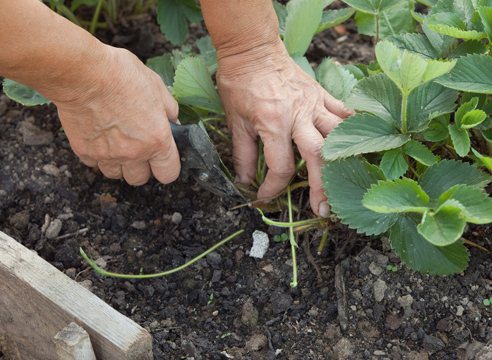

The strawberries themselves are cut in such a way that a part of the bush with a height of about 5 cm remains above the surface of the ground. Such pruning should be done for strawberries starting from the second year after planting. Plants of the first year are left uncircumcised for the winter.
Ways to use karbofos
Karbofos is a combination of organophosphates, a strong insecticide, containing the substance malathion in the formula. When interacting with a liquid (water), the Karbofos drug takes the form of a homogeneous mass - an emulsion, which, under conditions of exposure to negative ambient temperatures, takes on a thicker form, without losing its inherent toxic properties.
The drug is released in different forms: powder, liquid, capsule, tablet, etc.
The drug, regardless of the form produced, consists of elements that give it a specific and unpleasant "aroma" that does not pose a danger to people and animals (quickly weathered).
Benefits and Potential Harm
Bordeaux solution is a mixture of water, copper sulfate and slaked lime. The ratio of these components changes depending on what concentration the finished liquid should have. Using this product for processing strawberries has its own advantages and disadvantages.
- Ready-made Bordeaux liquid has the following beneficial properties:
- copper sulfate is a very effective antiseptic that destroys harmful fungus;
- lime cauterizes the focus of the disease on the leaf and prevents the spread of infection;
- the product can be used to treat many diseases of strawberries - black and gray rot, anthracnose, septoria, spot, powdery mildew, leaf rust;
- the insect pest will not be able to lay eggs on the treated strawberry bush, which will avoid the appearance of larvae;
- contains calcium ions, which reduce the high level of soil acidity;
- does not penetrate into the pulp of berries - the prepared solution remains only on the surface of the fruit, performing its protective function;
- the product stays on the plant for up to 1 month and is not washed off by rain, providing long-term protection against diseases.


- Before using Bordeaux liquid for processing strawberries, it is imperative to take into account the harmful properties of this mixture:
- the product has a negative effect on bees - in the first few hours after treatment, it is advisable to limit the access of these insects to the beds;
- the solution is toxic to humans and causes severe irritation of the mucous membranes, therefore, strawberries need to be processed in a respirator and rubber gloves;
- over time, the drug accumulates in the soil and can lead to premature fall of leaves and ovaries;
- if the dosage and rules of use are violated, the substance can cause a chemical burn of the leaves;
- causes serious food poisoning in humans - strawberries should not be eaten in the first 2 weeks after processing.
The main properties of the insecticide
In agriculture, gardening, pest control, forestry, the method of spraying with karbofos is widely used to kill insect pests. This composition is also used for the treatment of warehouses for storing food products and seeds.
In household plots, this insecticide is used to get rid of such "living creatures" as spider mites, aphids, honeydew, garden moth, whitefly, weevil, etc.
It is not recommended to spray the drug on flowering crops of berries and vegetables, as well as in the immediate vicinity of the hives, because malofos also has a toxic effect on domesticated insects (bees).
The main properties of the remedy karbofos include:
According to the instructions for using karbofos in the garden, the substance should be applied on a sunny, warm, windless day, at an air temperature of up to + 15⁰C, the greatest effect will be from a freshly prepared emulsion.
Abundant spraying should wet the leaves and stems of the plants for maximum benefits.
In most cases, the dosage depends on the size of the treated area, the extent of the damage to the vegetation and the specific classes of pests that need to be eliminated.
Diseases
The most common diseases in strawberries are: black and gray rot, brown and white spot, powdery mildew. Their occurrence is easier to prevent than to cure. Therefore, every autumn it is imperative to spray the plants against a disease that is more common in this area or with which the greens are already infected.
Powdery mildew
To protect the planting or get rid of this fungus, it is enough to treat everything with one of any drugs:
- Colloidal sulfur - Dissolve 100 grams of sulfur in a ten-liter bucket of warm water, mix well and water the entire soil.
- Copper sulfate - In a ten-liter bucket of liquid, 5 grams of copper sulfate are diluted, then a piece of grated laundry soap is poured. Mix everything well and spray the bushes in early autumn.
- Potassium permanganate solution - So many grains of potassium permanganate are dissolved in a bucket so that the water is light pink, after which the bushes are thoroughly sprayed. If you overdo it with the number of grains, then the leaves can get burned.
- Sulfaride - With its help, you can prevent the appearance of powdery mildew, for this, dissolve 2 tablespoons of this drug in a bucket of water. Then, with the help of a spray bottle, all the leaves and stems of the strawberry are treated.
- Topaz - This drug is very effective and fast. To do this, one ampoule of this drug is poured into a ten-liter bucket of warm liquid, after which all parts of the plant are sprayed. This procedure is carried out in calm and cloudy weather.
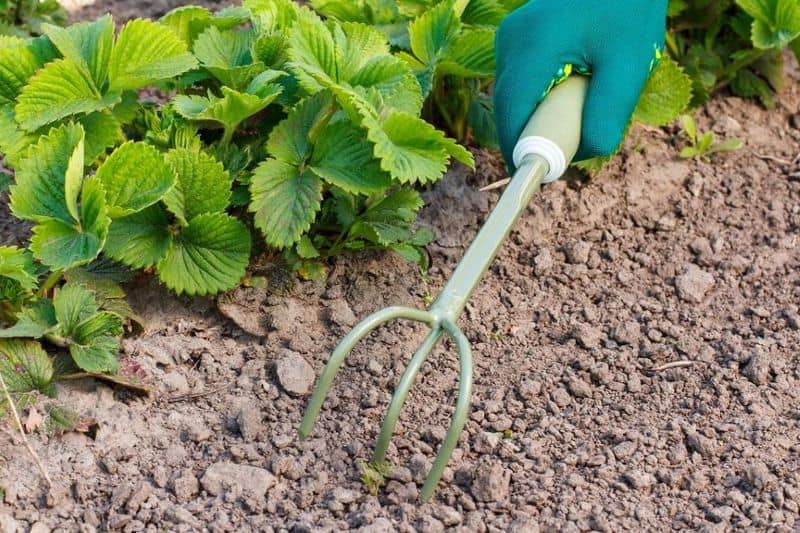

Rot and mottling
You can get rid of these devastating diseases using recipes:
- Nitrofen - With its help, you can not only protect plants from diseases, but also get rid of ticks and aphids. Processing is carried out in October, shortly before the onset of winter. To do this, dilute about 150 grams of dark brown paste in a bucket of water. This tool is used to treat not only plants, but also the ground around them. Then rot and spotting will not be able to take root here.
- Universal remedy - In a ten-liter bucket of warm water, dissolve two tablespoons of ash, vinegar, three tablespoons of sunflower oil, pour half a liter of liquid soap. Stir well, spray not only the plants, but also the ground around them.
- Copper oxychloride - It is sprayed with it after harvest.To do this, dissolve one tablespoon of copper oxychloride in a bucket of warm water.
Using the product in the garden
Every single species
flora in the garden is characterized by its differences when spraying:
- Raspberries: bushes should be processed in the spring before the onset of the active flowering period of the plant, and also again at the end of the collection of berries. Spraying will relieve raspberries from moths, ticks, weevils, etc. The liquid preparation is prepared in a ratio of 75 grams of substance per 10 liters of water.
- Using Karbofos, you can reliably protect currants from aphids, leafworms, scale insects. The processing of bushes should be carried out three times a season: during the opening of the buds, the formation of flowers, before harvesting for a month. The emulsion is diluted in the same proportions as for raspberries.
- Floral shrub plants (rose, jasmine, etc.) Karbofos protects from spider mites, aphids, etc. Proportions of solution preparation: 60 g per 8 liters of water. Spraying of bushes is carried out after the flowering of the plant.
- For effective protection of shrubs and trees, Karbofos in the garden is used to combat sawflies, termites, cherry flies, weevils. The first treatment should be carried out in the budding process, the second one - a month before harvesting. The dosage of the solution is the same as for flower shrubs: 60 g per 8 liters of water.
- For strawberries, the drug is the best remedy against strawberry mites. Spraying of strawberry bushes is carried out in the first weeks of autumn.
According to the instructions for using karbofos at home, it is important to strictly adhere to precautions and safety rules. It should be remembered
that the product must be stored away from children and animals, open fire and sources of ignition, work should be carried out using personal protective equipment (gloves, goggles, respirator). It is forbidden to eat while preparing the solution. After completion of the treatment, you should change your clothes and wash your hands, do not allow the drug to get into water bodies.
Winter berry shelters
If the bushes of the second, third and fourth years of life can winter without shelter (provided there is sufficient snow cover), then the new plantations need to be insulated. You also need to insure rare varieties and novelties, the endurance of which is still unknown.
So that the plants do not vomit, they need to be covered after the daytime minus temperature has been established. Usually, this is the end of October - the beginning of November, plus or minus ten days. You can cover:
- spruce branches;
- dry foliage (from the forest);
- stalks of sunflower, corn, reeds;
- non-woven fabric in white.


Shelter of a young strawberry bush with spruce branches
In addition, shields are installed near the ridges perpendicular to the prevailing winds for snow retention.
If you carry out all the activities for processing strawberries after harvesting: properly cut, fertilize, water and cover them, then it will "thank" the gardener with large fragrant berries in large quantities.
Processing strawberries in the fall from weevils and other beetles
There are two types of weevils that harm strawberries: earthy and gray root. If left unchecked, they can quickly spread throughout the area and destroy the strawberry plantations. Autumn processing of strawberries allows you to cope with beetle larvae, which live on the roots and feed on their juices, and adults, which can hide in hard-to-reach places of the bush.


Photo of beetles on strawberries
If we talk about strong, chemical preparations, the weevil "Aktellik", "Intavir", "Aktara" well displays. Most often they are used when peduncles or buds appear, but they are also effective in autumn. Moreover, they help not only against the weevil, but also against a number of other pests, including the sawfly, mites, and ticks.
Processing strawberries in autumn is an important part of plant care. If it is carried out from year to year, there will be no pests and diseases on the bushes. The plant will be able to fully develop and give bountiful harvests.
Snails and slugs
Snails and slugs are not easy to get out. But if you systematically fight them, they will definitely leave the site. To begin with, you should use the mechanical method. They are simply hand-picked as they appear. It is better to do this in the cool time, when they crawl out of their shelters.


The slug not only spoils the leaves, but also eats strawberries.
When mechanical cleaning does not work, insecticides can be used. During the autumn processing of strawberries, the insecticide "Metaldehyde" is used. He copes well with snails, slugs. Plants are not sprayed with them, but simply scattered granules around the bushes, where these pests most often appear.
Strawberry fruiting time
Flowering and fruiting of strawberries has no clear time boundaries - each variety has its own. In varieties with one-time fruiting, the active period is very short. Early varieties begin to bear fruit as early as May. One of the earliest varieties, Alba and Lambada, bear fruit from the second decade of May to the beginning of June, a little later the fruits of the Darselect and Hani varieties ripen, behind them, each with a shift of 3-4 days, Korona, Eliani, Polka, Elsanta ripen. All these varieties begin to bear fruit in May, but there are later varieties - June and July: strawberries in June are Symphony, Florence, Victoriani, and strawberries in July are Malvina.
Repairing varieties, or varieties of a neutral day, vegetating almost to frost and bearing fruit several times during this period, also differ in terms of fruiting, but such strawberries begin to ripen in summer. For example, the Portola strawberry harvest begins only in August and lasts until mid-November, the Flamenco varieties from mid-August to mid-December, and the Albion, Marling Pearl and Opal Pearl varieties bear fruit from July to December.
- Azimina: planting and care, growing in the ground


Next, we will tell you how to care for strawberries from the moment fruiting stops until the time when all life in the garden stops altogether - how to water strawberries, when and how to feed her, whether you need to cut it and how to do it.
Weeding
After watering the beds with strawberries, the garden soil in the aisles must be loosened, at the same time freeing it from weeds. If during this period you fill the aisles with any kind of mulch - sawdust, small branches, straw, then in the future there will be much less weed.
At the end of fruiting, the strawberries must be weeded out. Otherwise, until the moment of preparation for winter, everything will overgrow and it will be difficult to get rid of the weeds without pulling out the bushes. Remove the old mulch material at the same time as weeding. It accumulates a lot of pathogenic bacteria and pests.
We offer you to familiarize yourself with: Do-it-yourself potato digger: drawings and diagrams. Potato digger for walk-behind tractor
Tags: strawberry, after, usually, collection, harvest, care
About
«Previous post
Loosening and weeding
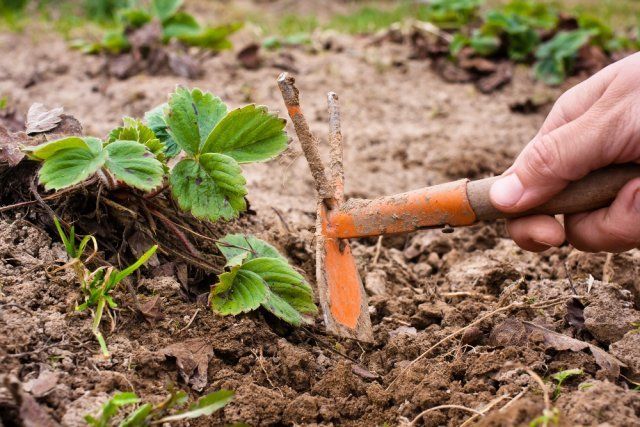

It is important to regularly loosen the soil near the bushes to ensure oxygen access to the roots.
First of all, the mulching layer is removed from the beds, in which pests and pathogenic microorganisms usually settle. They loosen the soil in rows and aisles without going deep so as not to damage the roots. At the same time, they spud the bushes so that the adventitious roots growing on the horns are underground. A layer of branches or sawdust is poured onto the cleaned surface.
How to process strawberries
The range of drugs for pest and disease control on strawberry plantations is huge. Over time, new chemicals appear, and old ones multiply their names: many businessmen produce well-known drugs under their own name. It is getting harder and harder to figure out what is on sale. Fortunately, in most situations it is quite possible to do with the most well-known drugs, or even "home" remedies.
Ammonia
Ammonia is an aqueous solution of ammonia and has a strong, pungent odor. Ammonia dissolves in water at room temperature at a concentration of about 25%, which is quite a lot, and it is still dangerous to use such a solution in everyday life and in a summer cottage. If it comes into contact with the skin, wash it off immediately with plenty of water. But, as a rule, less concentrated solutions are sold in hardware stores.


Most often, a 10% ammonia solution goes on sale
It is known that ammonia water (highly diluted ammonia solution) is an excellent nitrogen fertilizer. But ammonia can also be used to prevent many diseases of garden plants. Most crops can be sprayed with them after flowering. After processing strawberries with ammonia, ants, aphids, nematodes, and other pests do not appear on the beds for a long time. With regular spraying, you can also get rid of weevils, root nematodes, and may beetles.
It is believed that during the season it is necessary to treat strawberries with ammonia three times:
- the first treatment is in early spring, with the growth of green leaves. On a bucket of water, take 40 ml of ammonia (an aqueous solution of ammonia with a concentration of 10%). Water the garden bed abundantly from the watering can. At the same time, the solution should get on the bushes and on the soil under them. At the same time, in addition to fertilization, they get rid of fungal diseases on the leaves and pests that have wintered in the ground;
- the second treatment is after flowering. On a bucket of water they take quite a bit of ammonia, only 2-3 tbsp. l. After abundant watering, the strawberry bed is watered with a watering can with the prepared solution. This is a defense against most diseases. In addition, the second treatment is also a timely nitrogen fertilization;
- the third time after harvest. The solution is used in the same composition as in the spring. This is a charge and prevention for the next season.
Iodine
Iodine is a weak oxidant, it perfectly disinfects in most cases, due to its antiseptic properties it can prevent the appearance of various bacterial diseases.
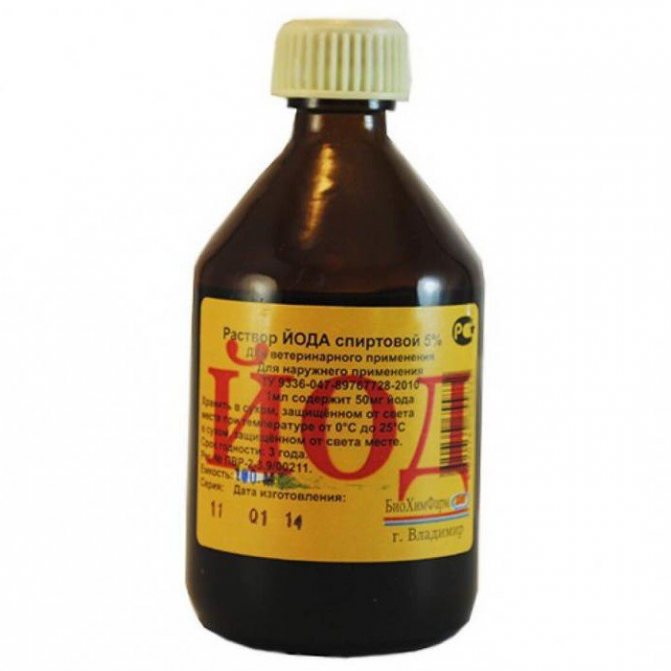

Iodine can be used to prevent bacterial diseases
By watering strawberries with iodine solution in early spring, you can get rid of weevils, which can destroy almost the entire crop. It is necessary to prepare a solution of only 0.5 tsp. pharmacy alcoholic solution of iodine in a bucket of water. First, the bushes are watered abundantly with water, and then treated with the prepared solution.
Iodine in strawberry beds is also used to combat gray mold and red spot. Strawberries are sprayed 3 times per season: in early spring, before flowering and in early autumn. You can add a little liquid soap (about 1 teaspoon) to the solution described above so that it sticks better to the leaves.
It is believed that iodine is an effective immunomodulator: after its use, not only an increased yield should be observed, but also a healthier bushes, as well as an increase in the keeping quality of grown berries.
Hydrogen peroxide
Hydrogen peroxide (formerly known as peroxide) has unique properties. In the fight against pests and diseases of strawberries, its oxidizing (disinfecting) ability is most important.
Recent Entries
Rose Petal Jam and Its 7 Health Benefits You Likely Didn't Know About What Fruit Are You According to the Zodiac Sign 11 Best Grape Varieties That Will Help You Create Unique Homemade Wine
You will most likely only be able to purchase a 3% peroxide solution. A 30% solution ("perhydrol") is quite dangerous to handle.


Hydrogen peroxide consists of only two elements, but has unique properties
Hydrogen peroxide at the summer cottage is used in the processing of greenhouses, various containers, tools. The drug kills bacteria, viruses, pathogenic fungi. So what is the best choice for anti-rot treatment - peroxide or iodine? Actually, the choice is yours.Depending on what is at hand. Peroxide leaves behind water and oxygen, iodine leaves behind potassium or sodium iodides. But their number, formed after the introduction of these drugs, is so small that there is no particular point in paying attention to this aspect. And both drugs cope with their disinfecting task perfectly.
Hydrogen peroxide is probably the easiest and safest remedy to keep strawberries from rotting. It should be dissolved in 1 liter of water 2 tbsp. l. hydrogen peroxide (in severe cases - up to 3 tbsp. l.). The resulting solution is abundantly sprayed on all strawberry plantings in the early morning or evening. The treatment is repeated after 1 week. In the amounts used, this drug is completely non-toxic to both humans and bees. Therefore, you can pick and eat berries within a few hours after processing.
Bordeaux liquid
Bordeaux liquid is a suspension made from copper sulfate and lime (calcium oxide or hydroxide). When they interact, little soluble copper hydroxide and calcium sulfate are formed, so handling the finished suspension is somewhat more difficult than with a solution: periodically, the contents of the sprayer should be shaken. As a rule, a kit is sold that contains both components of the mixture, and often an indicator paper to control the correct preparation of the liquid. First, according to the instructions, two solutions are prepared separately, and then they are carefully mixed, controlling the acidity of the medium according to the indicator. To create a neutral or slightly alkaline environment, add the required amount of lime (in the form of "milk of lime").


An unappetizing-looking Bordeaux liquid and actually quite poisonous
Bordeaux liquid, in contrast to pure copper sulfate, adheres well to plants, acts more gently and for a longer time. However, it is necessary to prepare the mixture strictly before use.
Bordeaux liquid has low toxicity for people, warm-blooded animals, bees. However, it is known that copper, like any heavy metal, does not add to human health in high doses, to put it mildly. Therefore, in recent years, a concept has emerged according to which annual spraying with Bordeaux mixture leads to excessive accumulation of copper in the soil. Therefore, the use of copper preparations at their summer cottage is advised only in case of urgent need, no more than once every few years.
A 3% solution of Bordeaux liquid for treating strawberries in early spring is used to prevent leaf spot. Later (closer to flowering, as well as in autumn), a 1% solution is already used for this purpose. The dosage is approximately 1.5 liters of liquid mixture per 10 m2 of strawberry plantation. It is better to carry out processing after harvesting and cleaning the beds from weeds and excess leaves. Spraying with this drug is carried out no more than 2 times per season.
Boric acid
Boric acid is weak, it is practically safe to use, it cannot do much harm to a person. This is a white powder, slowly dissolving in water, a valuable source of boron - an important trace element, therefore, in the garden, it plays a role, first of all, as a fertilizer. This is especially important when cultivating strawberries on sod-podzolic and light soils. Spraying the bushes in early spring with a boric acid solution is very favorable. An increase in the number of ovaries is observed, boron stimulates the appearance of new growth points, the berries become sweeter. The introduction of boric acid can increase yields, improve the sugar content of berries, and help protect plants from pathogenic microbes.
Usually boric acid is used together with potassium permanganate (the well-known "potassium permanganate").
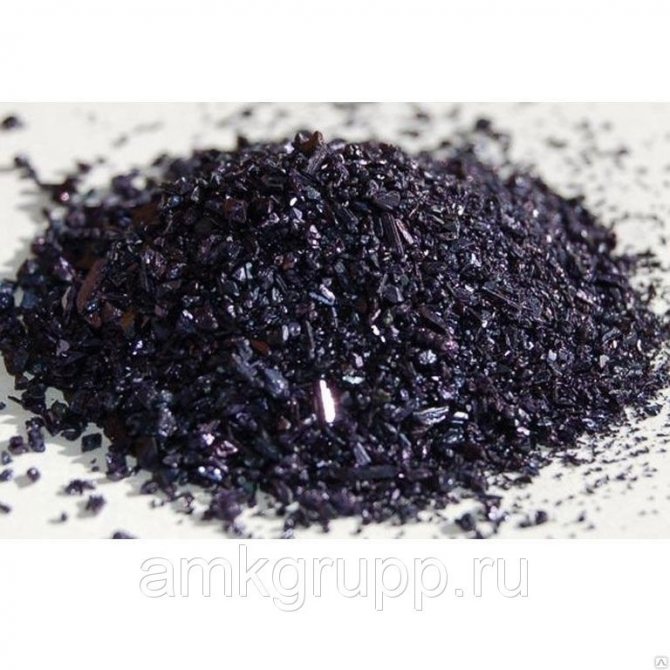

Potassium permanganate is the strongest oxidizing agent, and it should be used in the minimum possible amount.
So, in early spring, planting strawberries is spilled with a solution of boric acid and potassium permanganate - 1 g per bucket of water.This volume is for feeding 30-40 strawberry bushes.
For foliar feeding of strawberries in the spring, use the following composition: take 2 g of potassium permanganate and boric acid per bucket of water, 1 tbsp. furnace ash. Only a useful "extract" is needed from the ash. Therefore, it is insisted for a day in a separate container with water, not forgetting to stir it from time to time. Strain the ash infusion before use.
Ash
Ash is widely used as an individual "handy" preparation. Water "extract" from wood ash obtained from burning wood in a stove or on a fire is well suited for fertilizing strawberries.
As a fertilizer, it is necessary to use wood ash, and not the one that forms after burning various household waste.
The ash contains most of the elements necessary for the development of strawberries (there is, perhaps, only nitrogen). These are phosphorus, potassium, calcium, many trace elements. In addition, wood ash is renowned for its antibacterial and antiseptic properties. Thanks to the ash, the berries become sweeter, their keeping quality increases. Ashes can be scattered between the rows in the garden bed. The best time for this is the pre-rain period. After the rain, the most valuable thing in the ash will penetrate into the soil. It's a good idea to mulch the beds right after that.
Hot water
If you do not want to engage in chemical treatment of the strawberry plantation, you can try to limit yourself to physical. The first thing that comes to mind is, of course, thermal disinfection. It is known that gooseberry and currant bushes are watered with almost steep boiling water in early spring. At the same time, most pests and pathogenic bacteria are destroyed. Of course, such a number is dangerous with strawberries: after all, they come out of winter with green leaves! Therefore, they do not take boiling water, but just hot water.
In the first decade of April, strawberry plantations are watered with hot water (temperature 60–65 ° C, it is best to control it with a thermometer). Water is heated, of course, not far from the beds, scooped up with any convenient utensil and quickly poured into the center of the bush, capturing all the leaves if possible. Hot treatment destroys the larvae of the transparent mite, raspberry-strawberry weevil, sawflies, ticks and nematodes. Water, having passed through the soil to a depth of several centimeters, cools down to about 30 ° C, so there is no need to fear that the strawberry roots will be damaged.
Hot water also helps when planting strawberries. With its help, seedlings (mustache) can be disinfected for prophylactic purposes. To do this, the seedlings are immersed in water heated to 45 ° C and kept for 15 minutes.
the fire
It looks like barbarism, but there are such methods of struggle on the net.
Mustaches begin to grow actively 10 days after harvest. I will wait another 4 days, when the earth in the rows and aisles dries up, I cut off all the leaves, mustache with a pruner, and remove the weeds. At the same hour, I burn through the ground with a powerful blowtorch, which I ignited beforehand, and completely burn the leaves remaining after cutting off the petioles to ash. I compost the cut leaf and weeds. I burn strawberry hearts too, they are not afraid of being processed by fire for 10-20 s, if they grow at or near the ground level. Only those that have crawled out of the ground will disappear, so that the roots are visible.
P.P. Postnikov
Weevil remedies
The strawberry weevil is an extremely dangerous pest. It is not easy to notice it, because it is very small in size (up to 3 mm). It parasitizes from the very beginning of spring, feeds on all parts of the plant.
The fight begins in the spring, for which all damaged fragments of the bush must be carefully collected and destroyed. In early May, the plantation is treated with long-acting biological preparations (Iskra, Askarin). Plant protection from the pest continues for several weeks. In case of severe infection, the second treatment is performed in the fall. At the same time, powerful insecticides are already being used, such as Karbofos, Corsair.
If you do not use chemistry, it is much more difficult to deal with a weevil. Basic techniques:
- treatment of bushes with hot water in early spring;
- during the budding period - spraying with a solution of laundry soap with mustard;
- manual collection of insects;
- spraying with infusion of tansy or red capsicum;
- the use of good "neighbors" in the garden: onions, garlic;
- processing with tobacco-garlic infusion or infusion of celandine and onion husks.
Hilling strawberries
Strawberry is a perennial berry plant. That is why, it builds up an aerial root system, which, after a certain amount of time, practically peeps out of the soil. To protect such a rhizome from drying out and freezing, it is necessary to carry out hilling and mulching annually.
These procedures are especially relevant if you have been growing berries in the same area for several years.
Hilling significantly helps in the development of a strong strawberry root system.
Blitz Tips
So, in order to constantly enjoy only the most delicate and sweet fruits of strawberries, follow these rules for caring for it after the last harvest:
- Clean the area of weeds regularly.
- Remove old foliage carefully.
- Moisten the soil constantly.
- Do not forget to feed and fertilize in a timely manner.
- Take care of insulation for the winter.
- Conduct preventive pest control.
- Multiply strawberries to increase yields and renew your bushes.
Experienced gardeners recommendations
Correct manipulations can increase the yield of berries at times. Simple, but very effective advice from experienced summer residents:
- Compliance with crop rotation: strawberry bushes are rapidly aging and losing productivity, it is not advisable to grow them on the same territory for more than 4 years. Optimally, change the garden bed every year.
- The cycle of varieties: a systematic renewal of the assortment with new species does not allow pathogens to adapt to the immune profile of varieties;
- Weed strawberries are ruthlessly removed: these varieties may have barren flowers, small unattractive berries or not bloom at all, are distinguished by powerful growth of greenery and mustaches, and muffle "good" bushes.
- Correct reproduction: a new bed is folded from part of their bushes and part of purchased ones.
What care you provide for strawberries, you will get such a harvest, since it is an important component for the formation of juicy, large and healthy berries.
A Few Tips for Care and Handling Strawberries
Strawberry gardeners gradually accumulate their own rules for growing this specimen, from which practical recommendations are made. Here are a few of them:
- When choosing a place for a future strawberry plantation, you need to choose a site that is not plowed and has been sown with onions, carrots, beets, garlic, herbs. This should be a sunny area, because the plant will not bear fruit in the shade.
- This variety prefers light soils; if the soil is dense and heavy, then peat and sand should be scattered, and then dug up.
- The site needs to be prepared six months in advance. Before planting itself, manure should not be scattered, as it can burn the root system; it is better to do this in the spring so that the soil settles, and in the fall to plant new rows of strawberries.
- Strawberries are a moisture-loving crop. A drip irrigation system will give a good effect.
- A good top dressing for young bushes is a solution of potassium permanganate and boric acid.
- Interesting options for natural feeding:
- It is necessary to cut the shoots of the nettle, pour boiling water over it, insist for several days. The nettle solution will cause the shoots to develop and change the color of the leaves.
- The second recipe uses milk products. Pour whey or kefir (1 l) into water (3 l), stir. Water the crops under the root of the plant with the solution.The hardworking gardener is not lazy to water the plants every 14 days.
- In subsequent years, it is necessary to make compost under the plants, which is convenient to close up with a flat cutter.
- In order for each bush to bear fruit, you need to pinch the mustache in time. During the period when the fruits are tied, the growth of shoots should not be stimulated.
An experienced gardener plans all activities for the processing of crops even in winter. Strawberries will surely reward the gardener for their efforts with bright juicy berries.
What to do with a strawberry mustache?
When the processes are removed, there are a lot of them and it is really a pity to destroy them. Considering this, if you have enough free space, then the remaining shoots, having chosen the strongest and most well-developed and healthy ones, should be transplanted to the newly laid beds. All other whiskers must be removed, otherwise they will simply draw on moisture and additional substances to the detriment of the formation of the generative sphere of plants.
Cutting the strawberry whiskers should be carried out randomly; for this, a garden knife is usually taken and the whiskers are removed as close to the soil surface as possible. In no case pull out the shoot, so you almost always pull out part of the root, and it can dry out, and therefore the whole plant will die.
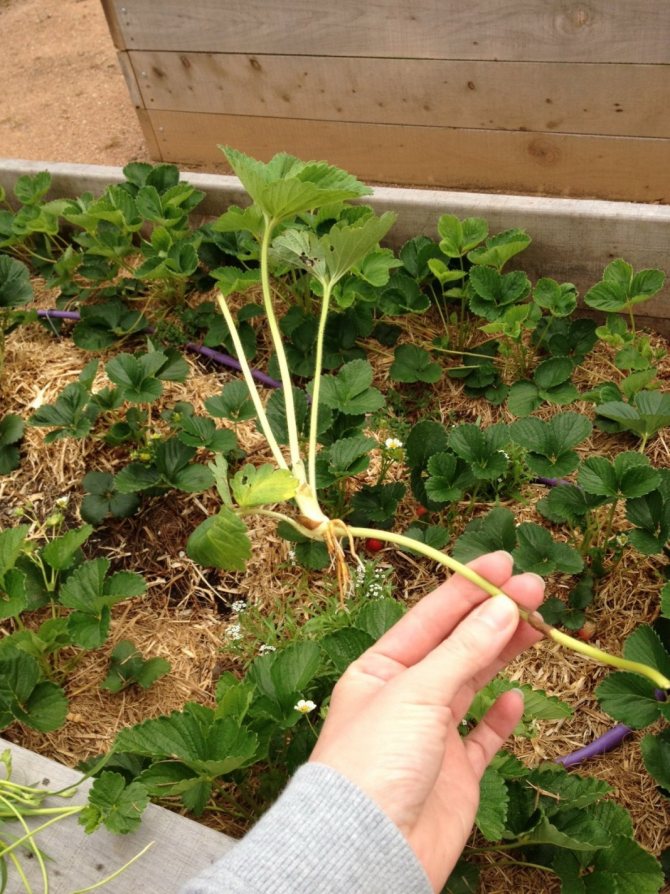

Rejuvenation of strawberry plantings with mustache layering. <>
The berries are harvested - why do you need care now?
Many people love tasty and aromatic strawberries. The only pity is that you can feast on it for a very short time. After all, garden strawberries bear fruit for no more than three weeks. To enjoy the taste of the berry longer, gardeners grow remontant strawberries, which can bear fruit twice during the season. How to care for remontant strawberries after harvest?
Having collected the first crop in mid-June, you should take care of the second fruiting, which will come in August. To enhance re-flowering, the leaves should be cut off, being careful not to affect the apical buds.
- If the plants are severely affected by gray rot, they must be treated with ash infusion, which is prepared as follows: 500 g of ash is diluted with 10 liters of water.
- Then strawberries are fed with mineral fertilizer, for the preparation of which 25 g of ammonium sulfate, 25 g of superphosphate, 30 g of potassium sulfate are mixed.
Taking proper care of your strawberries after the end of fruiting will ensure that you get a good harvest next year.
Some people think that regular autumn harvesting is enough for strawberries. But the fact is that strawberries stop bearing fruit very early, and there is still a lot of time left until autumn. Over the summer, the beds can become so overgrown with weeds that autumn harvesting will be very difficult, therefore, care for the strawberries after harvest is required.
In addition, the bushes that have finished fruiting must again replenish their strength, accumulating them for the next season, which will be almost impossible to do in the vicinity of the weeds.
Among other things, it is at this time that strawberries begin to form young leaves and again lay flower buds. Numerous mustaches appear, which also weaken the mother bush if they are not cut off in time. Against the background of this process, the old foliage is slowly dying off, interfering with the normal development of the new one.
All these factors already indicate that post-harvest strawberry care is necessary. But that's not all.
Various pests and pathogens that have accumulated over the season on old leaves are trying to move to new young leaves. And they may be quite enough. After all, everyone knows that during fruiting, strawberries are not recommended to be weeded, much less treated with chemicals.
So, in addition to the accumulated dying old leaves, it is required to loosen the aisles. Since the roots of strawberries are already shallow, the resulting adventitious roots may even end up on the surface of dense soil.And this is just at the moment when strawberries so need enhanced nutrition.
In fact, it turns out that there is still a long way to go before feeding, carried out in the fall, there are not enough nutrients in the soil, and the strawberries remain on a starvation diet. But as already mentioned, the better it gets stronger and sets more flower buds, the more berries it will be able to collect next year. Here are some more reasons why you need to process strawberries after harvest.
So, we will tell you what you need to do immediately after removing the entire crop from the plantings of strawberries, and then we will analyze each stage in as much detail as possible so that no black (unclear) spots remain.
The first stage is, of course, loosening the soil. It is necessary to loosen the soil carefully both in the aisles and under the bushes, trying not to damage the fragile root system of the strawberry and not to remove its roots to the surface. Loosening will provide ventilation of the soil, get rid of the soil crust, increase air and water exchanges, respectively, the plants will begin to receive more nutrition and moisture from the same unit of area, grow normally, develop and lay a sufficient number of generative buds to ensure a high yield of strawberries.
When loosening the soil around the strawberry bushes, try to simultaneously add a little fresh and nutritious soil to them, especially if you notice that one or more roots are bare.
The second important event, which can be carried out literally according to the list, is the weeding of the beds, that is, the removal of all weeds, especially wheatgrass. Wheatgrass is extremely tenacious and consumes a lot of moisture and nutrients from the soil. It is better not to pull it out of the ground, but literally pull it out with your hands, then, perhaps, its further growth will be greatly slowed down.
Watering: the beds should be kept moist, just try to pour moisture under the bushes in the evening. It is better not to pour water on the leaves at noon - sunburn may occur. Naturally, you need to water the strawberries based on the weather outside the window, for example, if it is raining and the soil is already saturated with moisture, then additional watering is not needed at all, it is much more appropriate here to loosen the soil, and perhaps tear off a couple of lower leaves from those that are literally nailed to the ground to increase moisture evaporation and prevent rot from forming.
If the weather is dry, and there is not even a hint of rain, then watering is necessary. When watering, it is best to use settled water or rainwater, it should be soaked in the soil to a depth of at least 5-6 cm so that the roots are saturated with moisture. It is also impossible to overmoisten the soil, but overdried soil will be detrimental to plants.
If you are a resident of a summer cottage, where you visit only on weekends, then you can design a simple drip irrigation system. To do this, you need to take a barrel of 200 liters, install it on a small elevation, under the stream of rain from the roof, make a couple of holes in the base of the barrel (according to the number of rows in the garden) for special tubes - droppers and spread them along the beds with strawberries. Moisture, flowing through the droppers, will moisten the soil in your absence, where it is needed.
If you do not want to "bother" with the installation of droppers, then you can simply mulch the soil after each watering, with a layer of a couple of centimeters. You can use straw, sawdust, humus, or just dry soil as mulch for strawberries. For several days, this mulch will be enough to preserve moisture in the soil.
In the event that after harvesting the garden strawberries, a layer of old mulch, say, straw, which you laid out, which you laid out in order to keep the berry clean and protect it from the appearance of fruit rot, remains on the site, it is necessary to remove such mulch as carefully as possible and burn it, reuse it not necessary, as harmful microorganisms can accumulate in it.
The next stage: as you know, the leaf blades of garden strawberries, after serving for two years, begin to age, so they can be safely removed. They do it in different ways: they are combed with a rake, mowed and even cut by hand. There is no clear guide to such actions, but do not forget that when removing old, discolored strawberry leaf blades, it is important not to damage the growth points.
Considering this, two methods are considered the most gentle - raking old leaves with a rake (they are easily separated) and removing them manually. This stage can be combined: the removal of old leaf blades can be combined with feeding the plants. Having reproduced offspring, strawberry plants are quite depleted, and there is a long winter ahead and a short period for which you need to have time to re-plant flower buds in order to give a good harvest for the next year.
Watering strawberries
Growing strawberries does not end the moment berries stop appearing on the bushes. Even after the harvest is harvested, strawberry care continues. After all, after harvesting, strawberries do not stop growing and developing, therefore one of the most important points of caring for them is moistening the soil on the site.
Weeding strawberries
After watering, it is necessary to loosen the soil in the area to a depth of 10 cm, but use a hoe very carefully near the bushes - do not damage the root system. While loosening, huddle the strawberry bushes, sprinkling the growing adventitious roots with earth. Remove emerging weeds at the same time as loosening. Make sure the strawberry beds are not overgrown with grass.
Remove weeds in the aisles, and then pour any small debris - sawdust, dry branches, chips, etc. into the aisles cleared of grass. This measure will prevent overgrowing of the area with strawberries with weeds. Later, in the fall, you will have to weed the weeds again, but there will be much less of them if you do the main work on their destruction in the summer, immediately after picking the berries.
The varieties of remontant strawberries are distinguished by a long fruiting period. Usually the crop is harvested in "waves", during which most of the berries ripen. Since strawberries of this type are distinguished by high indicators of productivity, strength and nutrients, they will need even more than conventional varieties.
We suggest that you familiarize yourself with: What is the cultivation of celery root
That is why you should not neglect the rules of "intermediate" care. They are no different from those described above, with the only difference that plant transplantation is not carried out, and the time for carrying out such manipulations must be calculated individually, depending on the duration of the break between flowering and fruit setting. It will also be useful to learn about how strawberries are fed for a good harvest.
An important measure when growing strawberries is to ensure complete rest after harvest. Strawberry thickets are well weeded, fertilized and watered. Moreover, each gardener decides on his own whether or not to cut off the aboveground part. You may also be interested in knowing if you can fertilize strawberries with ash.
The need to care for the crop after picking berries
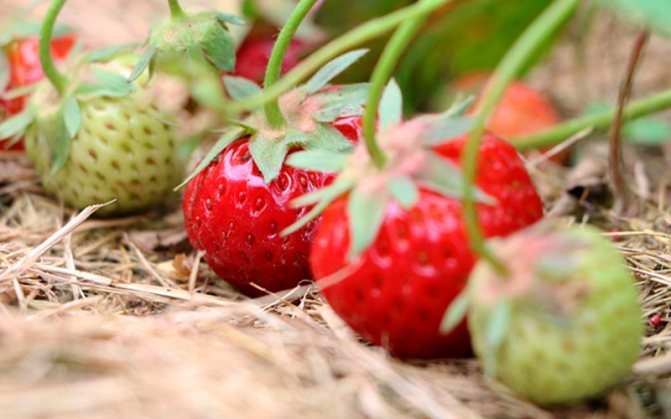

Summer residents grow on plots a variety of varieties of garden strawberries, therefore, the timing of fruiting will differ. In the early species, the berries ripen in June, the late ones yield in July, the remontant ones bear fruit before the cold weather.
The period after picking berries is the "rest" time of the crop, when the plants gradually begin to prepare for the new season. Old foliage, shoots die off, buds of the future harvest are actively formed. It is necessary to provide strawberries with a supply of nutrients, protect them from pests, infections, and clean the aisles.
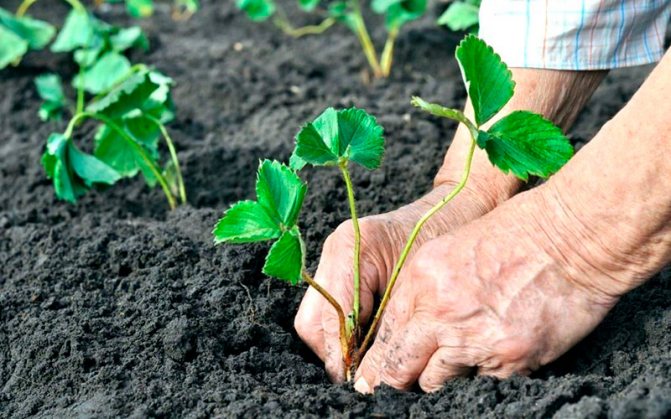

The second half of summer (July-August) is the time for rooting of the mustache of future seedlings, transplanting, pruning bushes, and preventive treatments.It is important to comply with the terms, properly feed the culture, taking into account the characteristics of the varieties, the climatic conditions of the area.
Pruning old strawberry leaves
To properly prune old strawberry leaves, proceed as follows:
- Clear the beds of all weeds and strawberry tendrils.
- Trim off any old foliage with extreme care. Be careful not to cause irreparable damage to new leaves. Early varieties need to be treated first, until young leaves begin to appear on them. We do not recommend delaying this procedure, otherwise the regrowth of fresh foliage will greatly complicate your subsequent pruning. The planting site should be carefully removed from all plant debris, because pathogens of various diseases can be on them.
- Look at all the young leaves. If you notice deformed or wrinkled, be aware that these strawberry leaves have been infected with a mite. Treat the bushes with acaricide, actellic or mite. Colloidal sulfur solution can be used.
Is it possible to mow all strawberry leaves
Mowing all leaves of the plant is recommended only if there is a large strawberry plantation., and provided that she is at least three years old. Young strawberry bushes should not be mowed; this will only drain them.
This event is sometimes carried out due to the fact that most of the plants have been affected by various diseases or a sudden attack by pests. In this case, all the mown leaves are burned, and the plantation is treated with any disinfectant.
Mowing is carried out three weeks after the last berries have been removed.
Useful tips for growing strawberries
Over time, the roots of Victoria become bare and it is very important to sprinkle it with earth so as not to lose this bush in the future.
- To obtain a good harvest, we choose zoned varieties with good qualities.
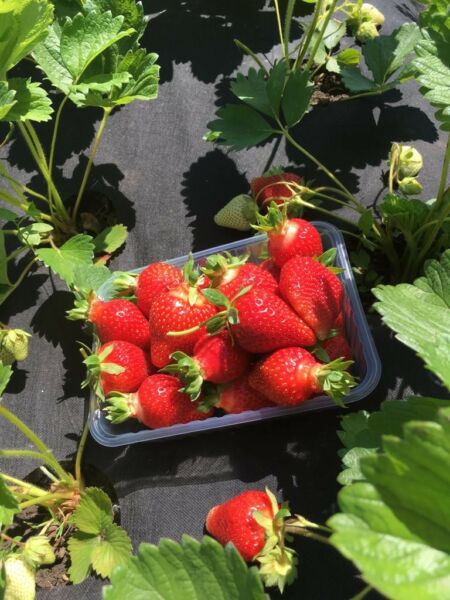

- We do not use chlorine fertilizers, garden strawberries react poorly to chlorine-containing substances.
- Do not forget to mulch the Victoria bushes (we will protect them from the cold and pests).
- As soon as snow falls on the ground, throw it with a shovel on the bed of berries (this is the best shelter from frost).
Oktyabrina Ganichkina's excellent tips on growing strawberries will also help grow the crop.
Now you know what to do with garden strawberries after fruiting! A little effort and the plants will surely thank you with tasty and large berries!
Transfer
New plants appear on the whiskers of old bushes. They need to be separated and transferred to the soil. It is not recommended to transplant ve bushes at once. New plantings do not begin to bear fruit immediately, so you can lose the harvest next year. It is advisable to renew the beds once every 3-4 years. The rosettes marked for reproduction are prepared in advance - they do not cut the mustache, wait for the formation of the first rosettes and dig in around the perimeter to allow the root system to grow.
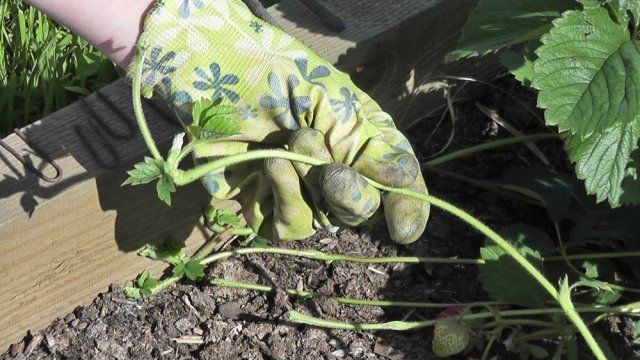

To transplant strawberries, let them grow a mustache
You can read more about transplanting strawberries in the article "When to transplant strawberries to a new place in the fall: timing and technology."
How to use urea correctly
Urea is very beneficial for all crops, be it strawberries, peas or strawberries. It stimulates the dynamic ripening of berries and the growth of crops. Urea is inexpensive, because of this it is very common among gardeners. In stores, granular urea is most often offered, this will reduce the risk of overdose when diluting the composition.
In autumn, the land on the site must be dug up, this will allow the fertilizer to be properly distributed over the ground. Urea is allowed to be used in combination with other fertilizers: ash, potassium permanganate, iodine, boric acid. You can find out what the culture lacks by its appearance
Read also: Make a gate from corrugated board with your own hands video
If the berry is planted in a new place, then it is allowed to additionally feed it with manure. This top dressing is very effective in the fall or spring. However, it must be remembered that an overdose of manure can cause the crop to burn. The berry also needs to be fertilized with humus, it is laid out in the aisle.
On a note. Urea tends to change the acidity of the soil.
With a significant amount of acid in the soil, the fertilizer will not change it. However, if there are not enough acids in the soil, then urea will increase their quantitative composition. If you do not need to change the number of acid in the soil, you can add crushed limestone to the fertilizer. It neutralizes the oxidation of the soil.
It is not difficult to grow a culture such as strawberries on your personal plot, you just need to follow all of the above rules. Then a high yield is guaranteed. Urea is not a harmful fertilizer than others containing sulfates, therefore it is more often used by summer residents in their gardens.
To obtain a rich strawberry harvest, it is required to fertilize the plant in a timely manner. For the active growth of any culture, nitrogen is required, it is with such a substance that urea is rich. Such a tool is rather easily diluted in water, while, in the process of fertilization, the plant quickly receives the necessary components for growth. But do not overfeed the strawberries with nitrogen, as the fruits will ripen small. With a strong oversaturation of the strawberry bush with nitrogen, the plant may die. Therefore, it is necessary to follow all the rules in order to harvest a rich strawberry crop.
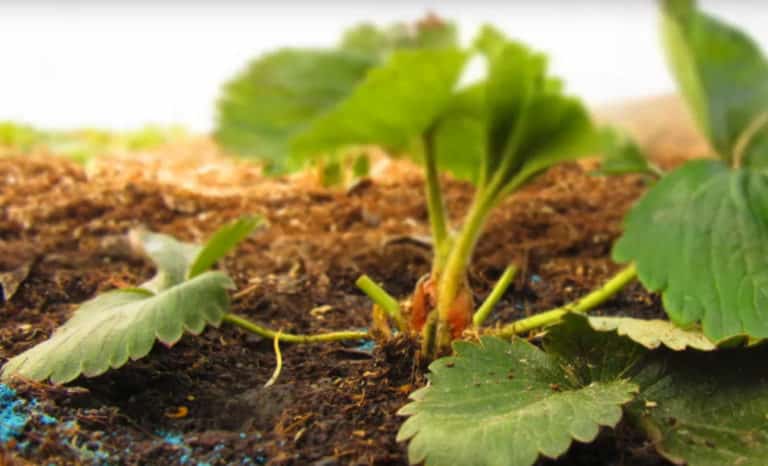

With the move
The main thing to do with a plant after harvest is to transplant it. First, you must prepare the right place for the berry. It must meet the following requirements:
- the soil is well-groomed, dug up, fertilized;
- the place where onions, legumes or garlic grew is ideal;
- Use organic matter, such as bird droppings or humus, to fertilize the garden bed.
You can transplant the shoots that the berry gave. It is better to dig up old bushes and throw them away. It is recommended to carry out the procedure on a cloudy day when there is no strong sun. If the weather is clear, it is better to postpone the transfer until the evening. Moisten the transplanted bushes well.
If you think that this is where the care of strawberries after fruiting ends, then you are deeply mistaken. It is still just beginning.
Strawberry propagation
When you trim the leaves and whiskers of the strawberry, leave only one whisker, digging in the soil that extends from it. This rosette will form a bush next year, which will give berries, and then the mother, "aged" bush can be removed. If you use this technique and know how to care for strawberries, you can increase the productivity of the strawberry area by at least 15%, and make this indicator constant.
Sections: Fruit and berry plants Strawberry Pink (Rosaceae) Herbaceous
After this article, they usually read
Tags: strawberry, after, harvest, harvest, care
About
«Previous post
Strawberry bushes - description
Strawberry is a herbaceous perennial plant, the bushes of which reach a height of 15-35 cm. The stems of strawberries are erect, pubescent with glandular pile. Strawberry leaves are trifoliate, large, light green in color. The flowering of strawberries looks attractive - white five-petal flowers with a double perianth are collected in corymbose inflorescences of 5-12 pieces. The so-called strawberry berry is actually an overgrown receptacle with numerous small nuts, located on its surface. Strawberries have a sweet and sour taste and a pleasant aroma.
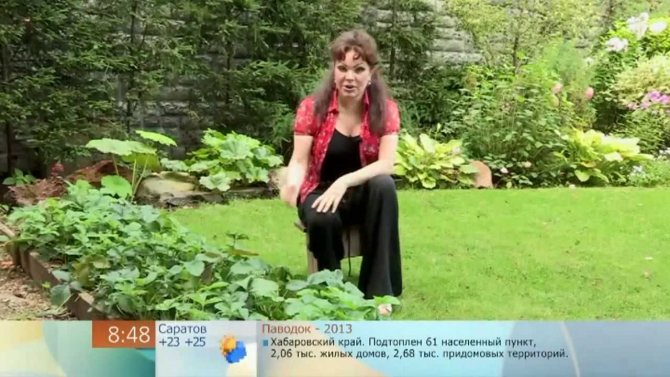

Pruning
This procedure should be started when at least a week has passed after picking strawberries. The leaves are mowed at a height of 7‒8 cm so as not to damage the growth points, after which they are removed with a rake.


Within a few days, the strawberry bushes will begin to be covered with young leaves, and soon the garden will take on its original appearance.
If you are not a supporter of mowing and are interested in when to prune strawberries after harvest, then this can also be done after 7-10 days.
Old leaves are pruned to the same height without affecting the growing point. Each bush is treated this way. This method is suitable when you need to trim the strawberries after harvest in a small area.
In addition to young leaves in summer, strawberries begin to throw out a mustache. If you want to propagate it, then some mustache can be dug in. The rest should be disposed of, since they take a lot of energy from the plants.
Loosening
The third thing to do is to loosen the soil. This is beneficial for the root system: air exchange improves, moisture is better absorbed, nutrients are assimilated. The earth is loosened between the rows, trying not to touch the fragile roots. Use a small spatula or narrow hoe.


The optimum depth of the grooves is 8-10 cm. At the same time, it is recommended to poke the bushes, slightly sprinkling them with fresh soil.


Watering
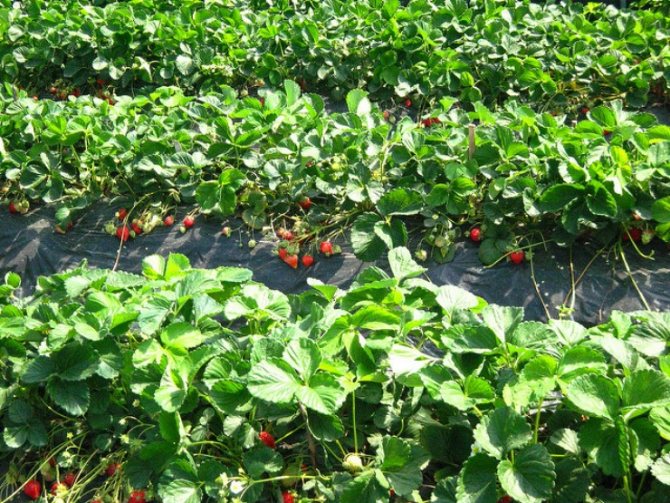

The frequency of watering berry plantings depends on the weather conditions. In a wet summer, there is no need for additional water in the garden at all. In dry and hot periods, strawberries are watered 1-2 times a week so that the water soaks the soil to a depth of 5-8 centimeters (at this depth, the strawberries have the bulk of the roots). To do this, 1.5-2 watering cans are consumed per square meter of the garden.
After watering and rains, a dense crust appears on the soil, which must be broken up by loosening. It is convenient to do this with a small Fokine plane cut or with small pitchforks. The soil between the rows is loosened to a depth of 8-10 centimeters, and near the plants the toe of the flat cutter is deepened by 2-3 centimeters, no more.
Regular loosening of the soil in the garden saturates it with oxygen and the roots of strawberries grow strong and powerful.
Using urea to feed strawberries
When feeding any crop with urea, including strawberries, the main thing is not to overdo it, otherwise the fruits will not be tasty and will contain a large amount of water. But if you do not fertilize the strawberries at all, then the fruits will be small. Therefore, feeding strawberries with urea is necessary, but certain rules must be followed.
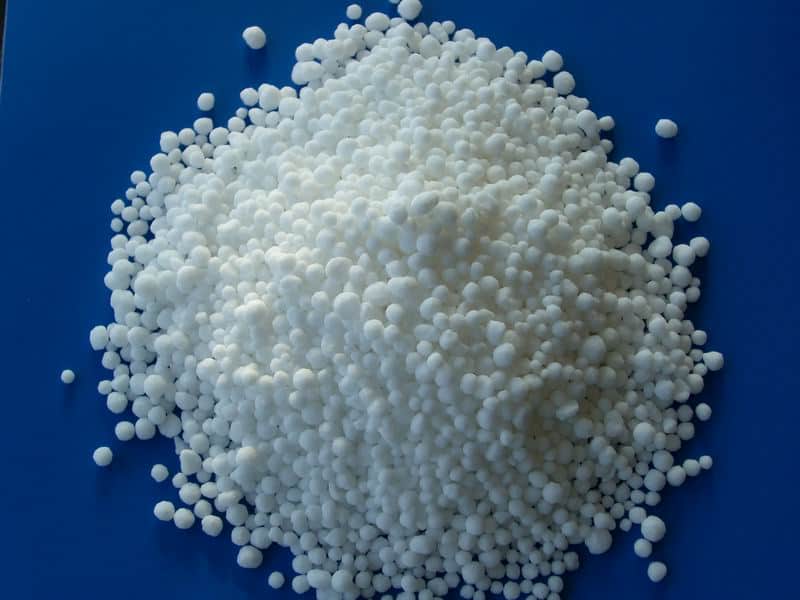

Top dressing is allowed 3 times per season:
- In early spring. Immediately after the snow melts, in order to awaken the plant to growth, you need to feed it with urea.
- After harvest. This top dressing is required in order for the plant to survive the winter well.
- In the autumn. To get a rich harvest next year, this top dressing is mandatory.
Experienced summer resident Fr. So, for the implementation of such feeding, 2 liters are required. water is required to take 1 tbsp. l. urea. Spray the plant gently with this solution. Urea contains, in addition to nitrogen, other useful components that strawberries need to form large berries.
We are constantly receiving letters in which amateur gardeners are worried that due to the cold summer this year there is a poor harvest of potatoes, tomatoes, cucumbers, and other vegetables. Last year we published TIPS on this matter. But unfortunately, many did not listen, but some still applied. Here is a report from our reader, we want to advise plant growth biostimulants that will help increase the yield up to 50-70%.
We advise you to prepare in advance for the summer season, pay attention to this biological product. There are a lot of positive responses.
The importance of timely feeding
The ripening period in strawberries is accompanied by an active need for nutrients. It is during this period that you can feed the plant with urea. A positive feature of urea, also called urea, is that such a fertilizer is suitable for absolutely any soil.In addition to the root method, it can also be used for foliar feeding.
Strawberries are quite picky culture and their fertility depends on the soil in which they are planted. Also, the plant can react differently to feeding. It is required to observe the strawberry bushes and identify, by the leaves and stems, what substances are required by the plant. In addition, this culture is very fond of moisture and needs a large amount of nutritional components. It is fertilization with urea that provides a large number of various substances that the plant needs.
Characteristic
Everyone knows strawberries. This plant can be recognized by its appearance:
- undersized bushes, the height of which does not exceed 35 cm;
- straight stems with a small fluff;
- during flowering, white buds are formed, which have 5 petals;
- the fruit is bright red in color and has a delicious aroma.
There are many varieties. All have their own separate ripening period. The earliest of them occurs in May and can continue until the beginning of autumn.
In order for the plant to give a large harvest, it is necessary to properly care for it. The main stages of preparation include:
- watering;
- weeding;
- hilling;
- loosening;
- top dressing.
But what about the plants from which you have harvested the entire crop? Here, in no case should they be thrown. It is necessary to carry out further care of the strawberries in the summer, after fruiting. And our task with you is to find out how this is done.
Rules for the use of urea
Whether it is strawberries, beans or strawberries, urea is equally useful for absolutely all crops. It promotes the rapid ripening of strawberry fruits and the active growth of the plant. The cost of such fertilizer is small, so it is very popular among gardeners. Urea is produced in the form of granules, which significantly reduces the likelihood of overdoing the number of components when diluting a solution for feeding.
In the fall, before making the last top dressing, you need to dig up the soil. This will ensure that all substances are evenly distributed over the entire soil surface.
Urea can be used in combination with other dressings. The appearance of the culture, its fruits, leaves and stems will help to determine what substance the plant lacks.
If the plant is transplanted to another site, then you can additionally fertilize it with manure. Such fertilization is most effective during the winter or spring time, when the snow has not yet melted. But it is worth noting that a large amount of manure can burn the plant. Therefore, it is better to use rotted manure for fertilization. Also, this fertilizer can be spread between the bushes.


It's important to know! Urea can change the amount of acid in the soil!
If the earth has a high acid content, then urea will not change this level. However, in other soils where acidity is low, it can increase acid levels. If it is required not to disturb the acidity of the soil, then limestone can be added to the solution, after grinding it. Limestone neutralizes the oxidation process of the soil.
Watering according to all the rules
We proceed to the next procedure, which is part of the main care for strawberries after fruiting. Ganichkina, a well-known agricultural technician, recommends paying special attention to watering. She gives some advice on this:
- Moisten the soil after each fertilization. This will help the nutrients dissolve faster and be absorbed into the soil.
- Sprinkle peat over the bed to prevent crusting.
- Keep the soil moist throughout the season. In no case should the bushes be flooded so that they do not start to rot.
- Humidification should be carried out as needed. Watering should be abundant. Superficial wetting will be of no use.
- After each watering, loosen the soil, remove weeds and be sure to remove the mustache. Strawberry bushes should not waste their energy and juices on them.
Lack of nitrogen
Most gardeners do not use top dressing, as they consider them harmful. But do not forget that if the soil does not contain the components necessary for growth, then the plant has nowhere to take such components. The only way out in this situation is to fertilize the plant. By the outward appearance of a culture, it is possible to determine which substances it does not receive.
With a lack of nitrogen in the plant:
- yellow leaves;
- small fruits;
- thin stems.
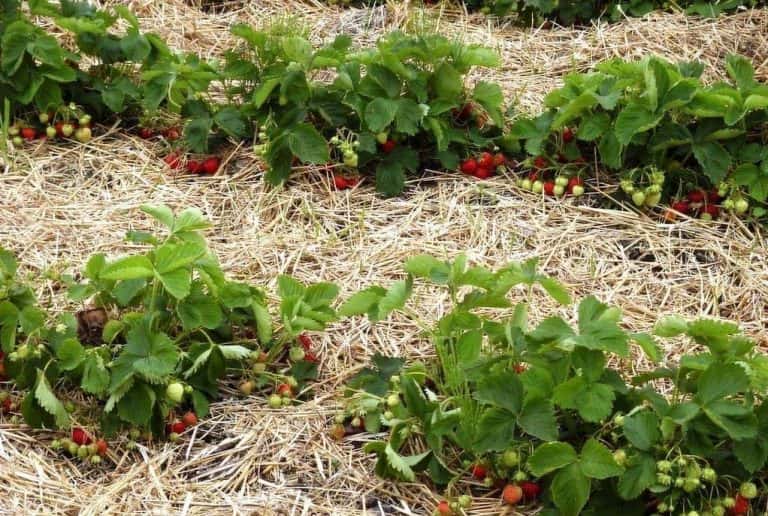

Therefore, timely fertilization of the plant is necessary. It is urea that is able to give the necessary substances to strawberries.
Tilling the soil in the garden and feeding strawberries
The soil on the site must be loosened to a depth of 10 cm, but not close to the bushes, because the root system of the strawberry can be damaged. On the contrary, while loosening, huddle each bush so that the growing adventitious roots are underground.
Since after fruiting the strength of the strawberry is depleted, it needs nutrition, and for this, complete mineral fertilization with trace elements must be applied to the soil. Consumption - 20-30 g / m² plot. It is best to buy a specialized strawberry fertilizer in a garden pavilion or in a store, which contains all the substances the plant needs.
One of the best fertilizers is Ammofoska, which, in addition to the main elements nitrogen, phosphorus and potassium, also includes sulfur, calcium and magnesium. It is not recommended to use preparations containing chlorine, since strawberries react poorly to it. But adding humus to the soil will never be superfluous.
Embed the fertilizer in the soil and cover the surface of the bed with peat.
After the end and until the end of the season, strawberries are rarely watered, but plentifully: frequent surface watering does not bring any benefit. From time to time, loosen the soil, remove weeds and growing whiskers: the plant should expend energy and nutrition on the formation of flower buds, and not on the development of daughter outlets.
Rate the article
Caring for remontant varieties
Repair strawberry varieties bear fruit all season, so you can enjoy fresh berries almost all the time. But if someone told you that such bushes do not need care, they say, there is no time for this, otherwise you will lose part of the harvest, then they are either mistaken out of ignorance, or deliberately deceive you. Repaired strawberries should be cared for in the same way as other common varieties.
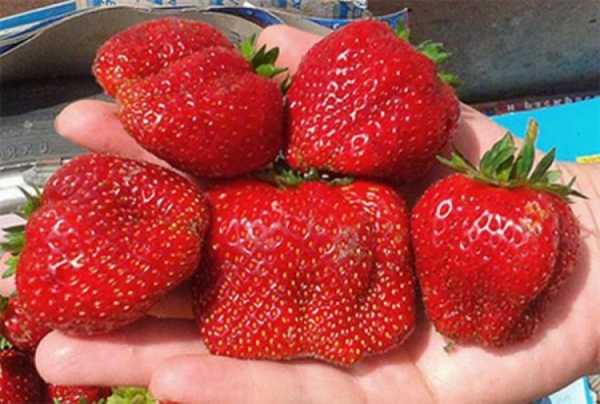

Repairing strawberry varieties bear fruit almost all season - fresh Vima strawberry
Optimal pruning of such bushes primarily consists in thinning them, since the root system spends useful substances necessary for the growth of berries for the growth of foliage, which, of course, reduces productivity. With such prevention, the foliage with the stems inside the bush is removed, but at the same time they do not cut them at the root and leave about nine stems intact on the plant.
The whiskers are eliminated during the harvest period, more precisely, immediately after its end, and at the same time, the reddened leaves are removed, which reduce the number of ovaries. If old bushes are found in the garden, they are dug out before frost.


The cultivation of remontant strawberries in greenhouses and greenhouses can be put on an industrial basis
It should be mentioned that in the northern regions remontant varieties do not have time to bear fruit a second time due to the onset of cold weather. In addition, frosts will not allow high-quality prevention of the beds, but there is still a way out. In such cases, removable greenhouses are erected over the beds, which are raised during harvesting and preventive maintenance, but must be installed in place at night (frost time).
Mustache trimming
Beginning at the age of three, strawberry bushes are more actively throwing out their mustaches. Plants spend a lot of energy on their laying, which reduces the overall yield of the berry. Therefore, the whiskers that appear are regularly and completely cut off with a pruner or sharp scissors.
In this way, General cleaning on a strawberry plantation after harvest consists of removing old diseased leaves, excess whiskers and weeds.
If you plan to renew plantings this year, then leave 1-2 well-developed shoots on each outlet (usually they appear first) and dig in close to the mother plant, without interrupting communication with it.
Mulching


Remember to remove old mulch from the garden before removing leaves and whiskers.
Mulching reduces the need for watering by 1.5-2 times, that is, instead of once a week, you will have to irrigate the garden only once every two weeks. On a bed covered with organic matter, the soil does not cake even after severe rains, so it does not need to be loosened so often. This is another important plus of mulching.
Straw, humus, compost, non-acidic peat, leaves, sawdust or dried grass without weed seeds are used as mulch. Please note that mulching material cannot be reused, as pathogens and pests accumulate in it over time.

